CCHF Research | Novel Disconnection Strategies
Led by Jin-Quan Yu
Developing new strategies and new reactions to improve our ability to make organic molecules continues to play a central role in the sciences and innovation that spans medicines, agrochemicals and high performance materials. While the tremendous efforts over the past fifty years have elevated synthetic chemistry to a remarkable level of capability in making complex structures, synthetic chemists are facing ever more challenging problems. For instance, the advance of biology, especially the availability of genetic information points to the need for rapid access of as diverse as possible new molecular scaffolds in order to explore new chemical space for drug discovery. New understanding in molecular recognition and physical properties of organic materials presents exciting opportunities for developing high performance materials which would need highly effective synthesis of a particular organic molecule. On the other hand, the environmental concerns call for the development of synthetic technologies that will allow the preparation of organic molecules with optimum step-economy and atom-economy.
The remarkable progress in organic synthesis in the past fifty years can be largely attributed to the development of new disconnections based on wide range of reactions. However, vast majority of these reactions relies on the breaking of relatively reactive π-bond or carbon-oxygen and carbon-halogen bonds. On the other hand, in any given organic molecules being simple starting materials, intermediates or late-stage precursors, C-H bonds often outnumber other types of bonds. It is therefore crystal clear that if synthetic chemist can convert these C-H bonds selectively to the desired functional groups needed for the next step, synthetic routes can be drastically shortened. In addition, the use of bulky chemicals as starting materials for synthesis will be possible if C-H bonds in these chemicals can be selectively functionalized, thus making organic synthesis in the future more sustainable.
The past ten years have seen rapid growth of development of C-H activation reactions and their applications in synthesis have also been demonstrated with a few examples. The center aims to develop strategic disconnections based on C-H activation, and showcase broad application of these reactions in synthesis of a wide range of natural product family. These studies will not only identify the important reactions that need to be developed as a priority, but also provide a road map for implimenting C-H activation reactions in synthesis. In particular, the center will focus on the following three key strategies.
- We develop C-H activation reactions that will provide unprecedented convergency for making a representative class of molecules.
- We collectively identify synthetic targets that are difficult to make using conventional methods and design a C-H activation disconnection to simplify the synthesis via late-stage C-H functionalizations.
- We develop a C-H activation reaction to access the core structure that can be readily elaborated to make the natural product.
Related Publications:
-
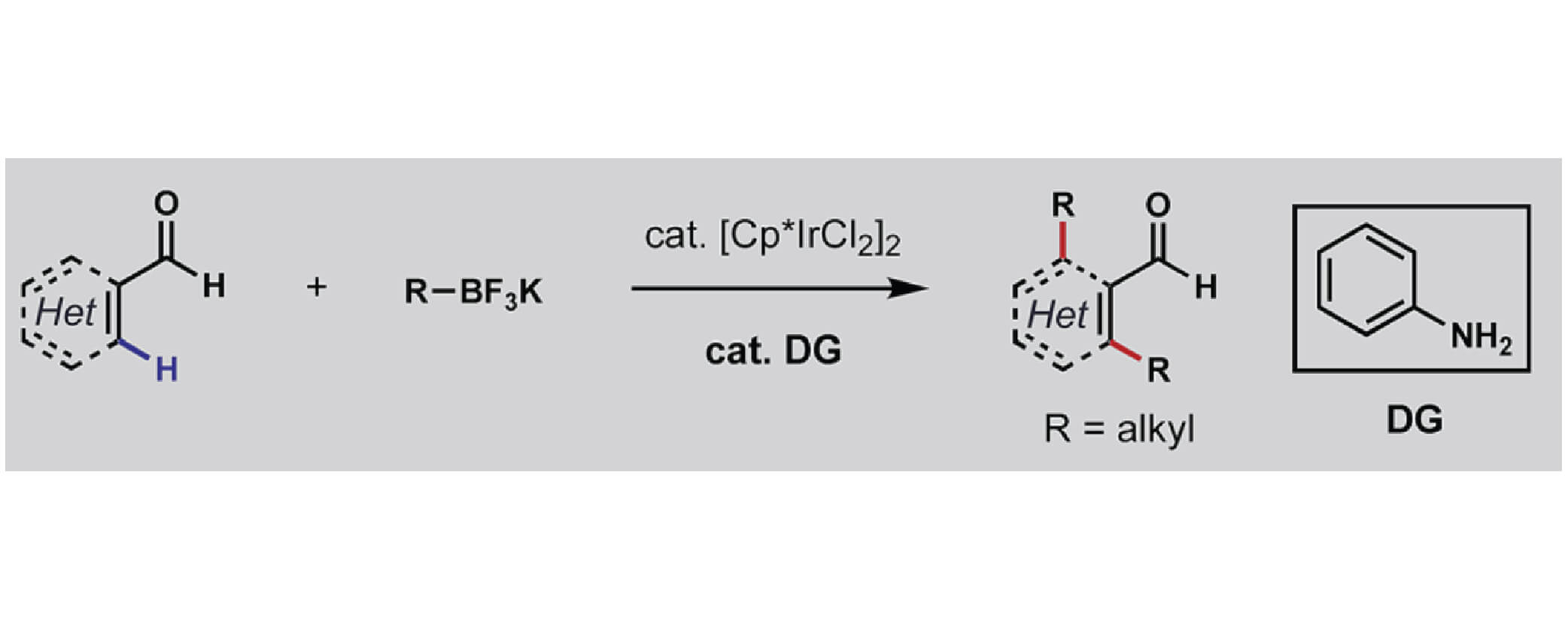
10/2018
Ir(III)-catalyzed ortho C–H alkylations of (hetero)aromatic aldehydes using alkyl boron reagents
RESEARCH
-
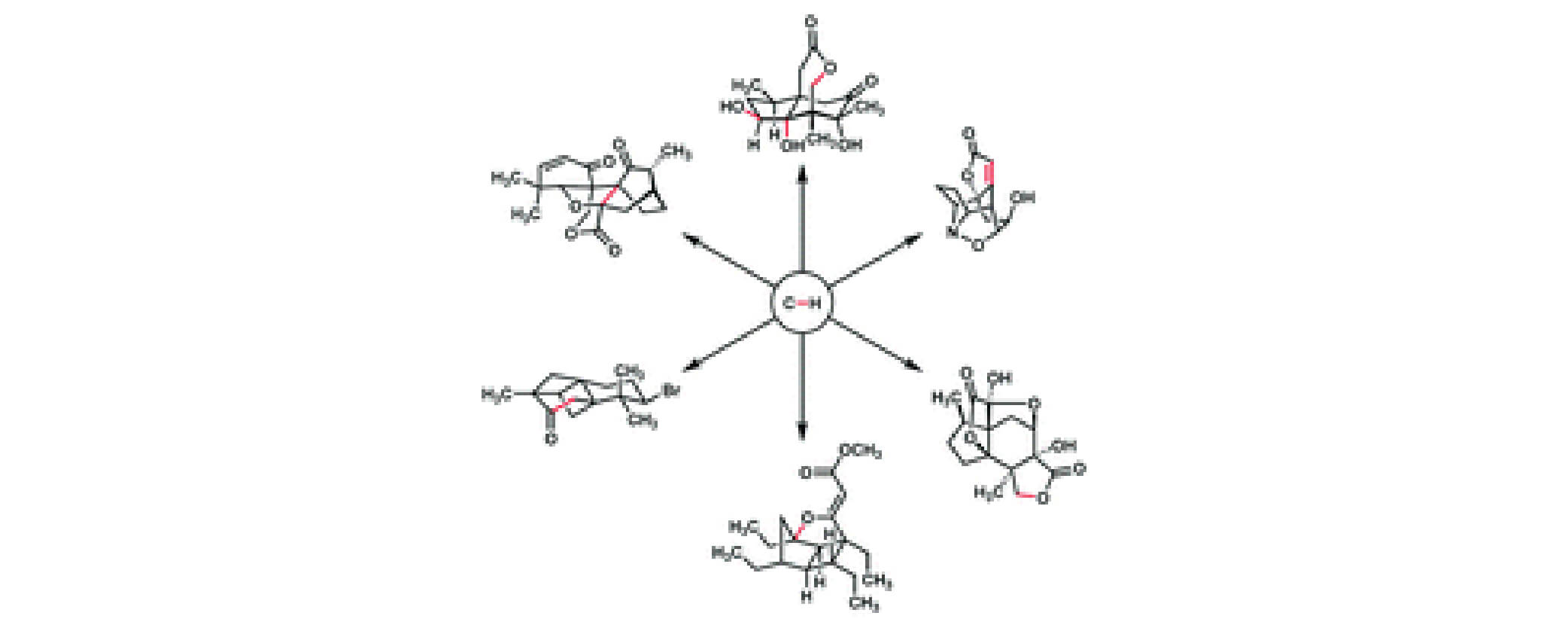
11/2018
Recent applications of C–H functionalization in complex natural product synthesis
RESEARCH
-
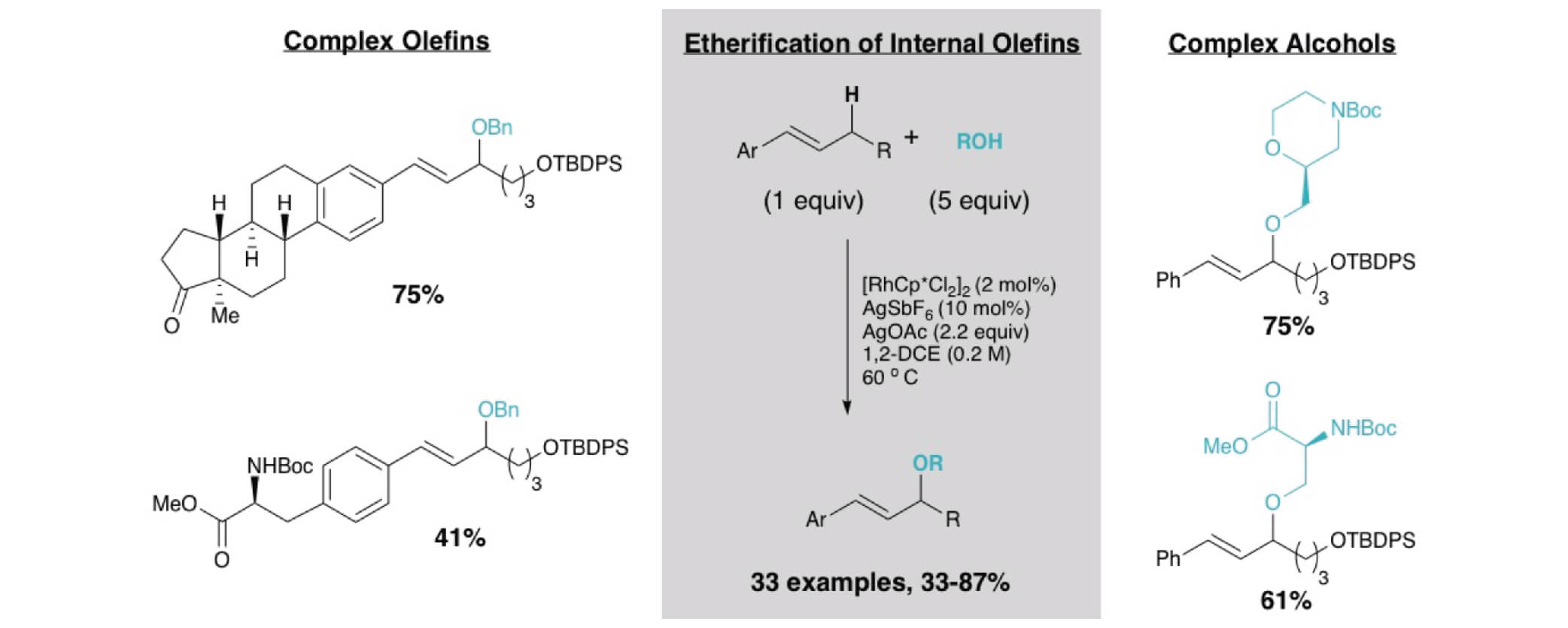
09/2018
Intermolecular Allylic C−H Etherification of Internal Olefins
RESEARCH
-
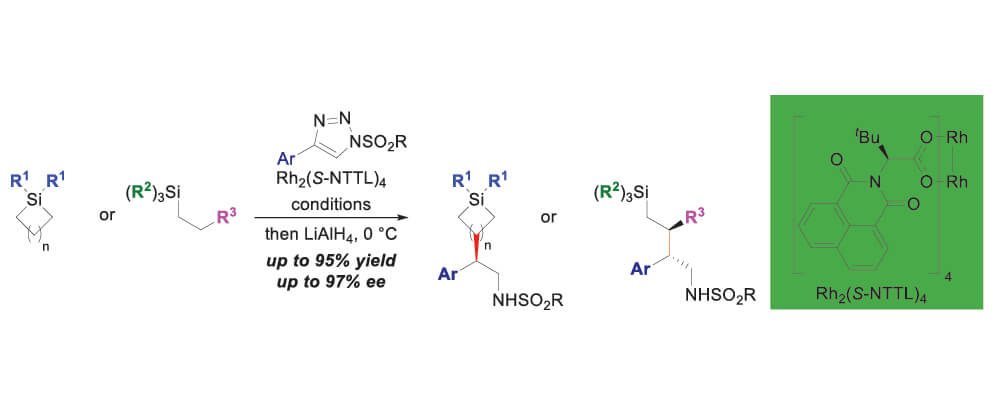
04/2018
Harnessing the β-Silicon Effect for Regioselective and Stereoselective Rhodium(II)-Catalyzed C–H Functionalization by Donor/Acceptor Carbenes Derived from 1-Sulfonyl-1,2,3-triazoles
RESEARCH
-
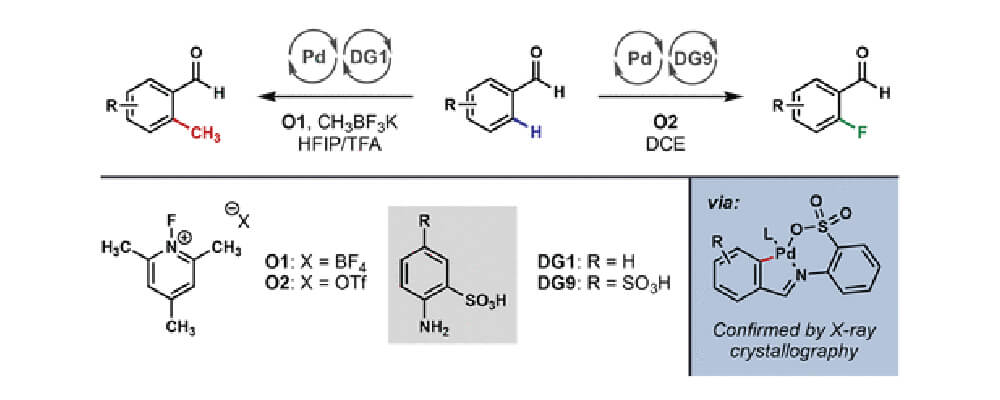
02/2018
Pd-Catalyzed, ortho C–H Methylation and Fluorination of Benzaldehydes Using Orthanilic Acids as Transient Directing Groups
RESEARCH
-
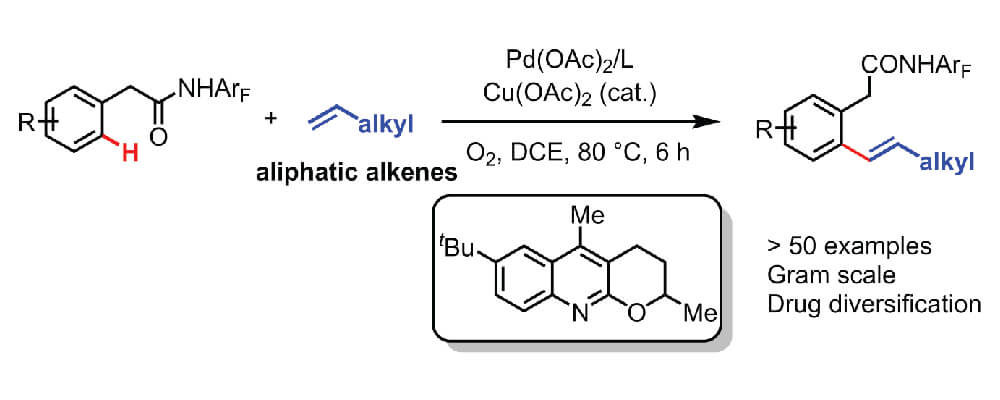
01/2018
Ligand-enabled ortho-C–H olefination of phenylacetic amides with unactivated alkenes
RESEARCH
-
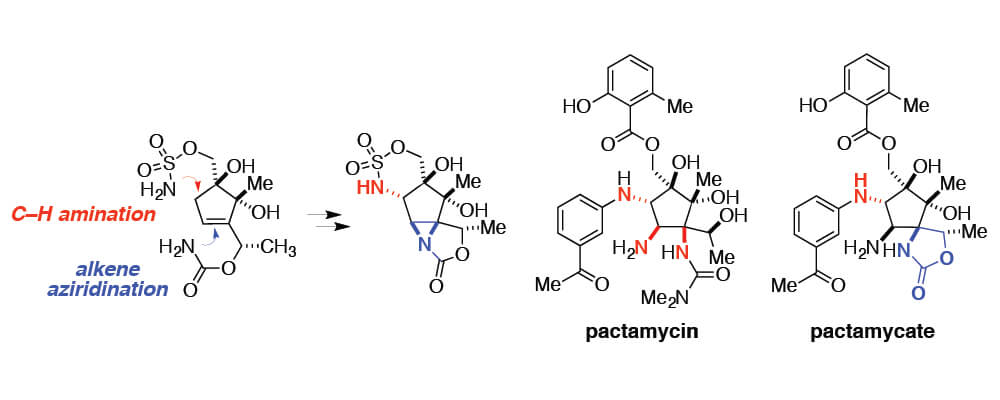
04/2018
Synthetic Studies Toward Pactamycin Highlighting Oxidative C–H and Alkene Amination Technologies
RESEARCH
-
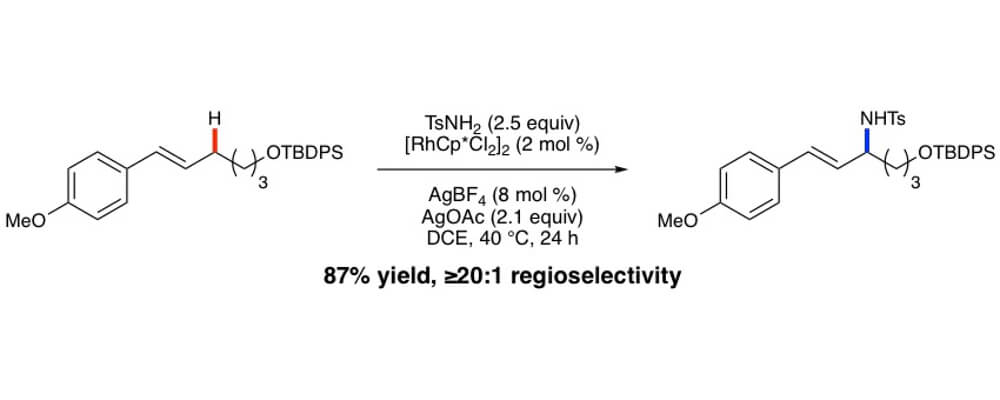
09/2017
Regioselective Intermolecular Allylic C−H Amination of Disubstituted Olefins via Rhodium/π‐Allyl Intermediates
RESEARCH
-
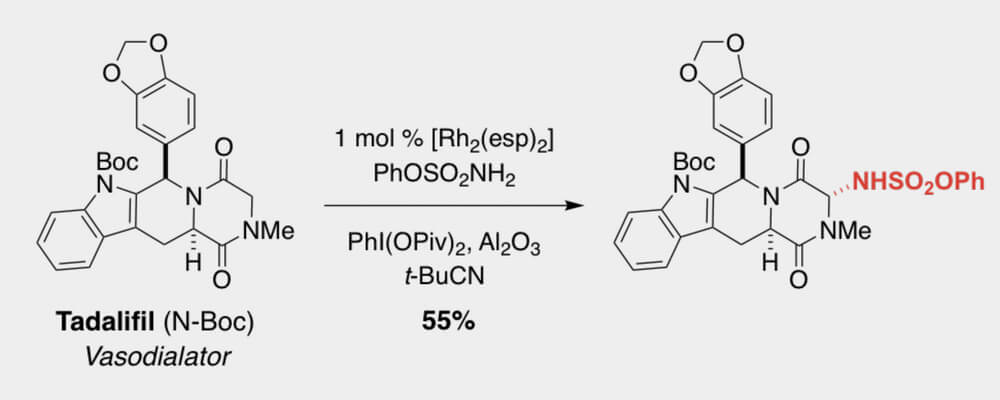
02/2018
Intermolecular sp3 C-H Amination of Complex Molecules
RESEARCH
-
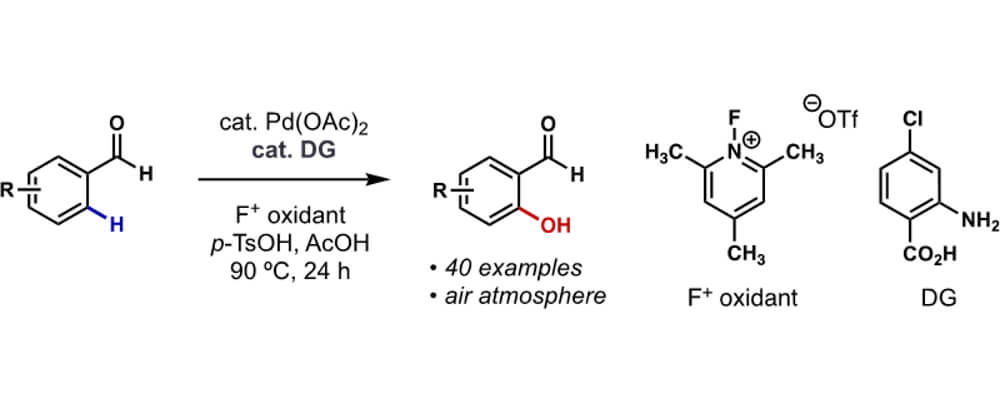
11/2017
Pd-Catalyzed Ortho C–H Hydroxylation of Benzaldehydes Using a Transient Directing Group
RESEARCH
-
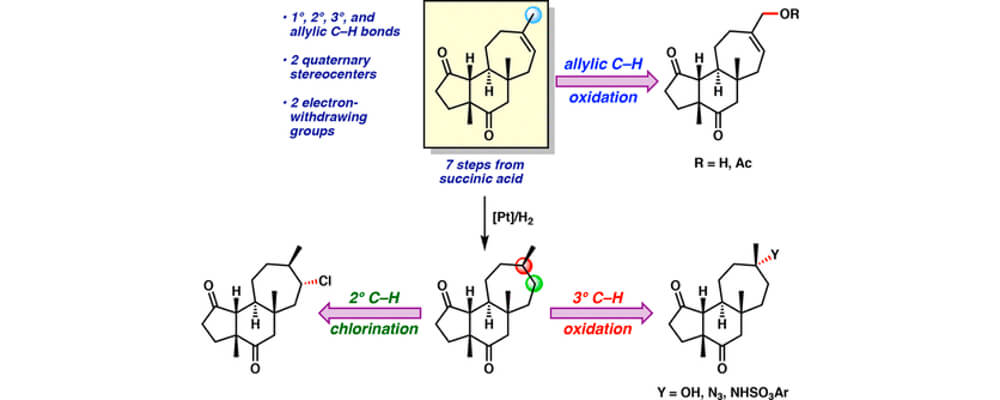
01/2018
Cyanthiwigin Natural Product Core as a Complex Molecular Scaffold for Comparative Late-Stage C–H Functionalization Studies
RESEARCH
-
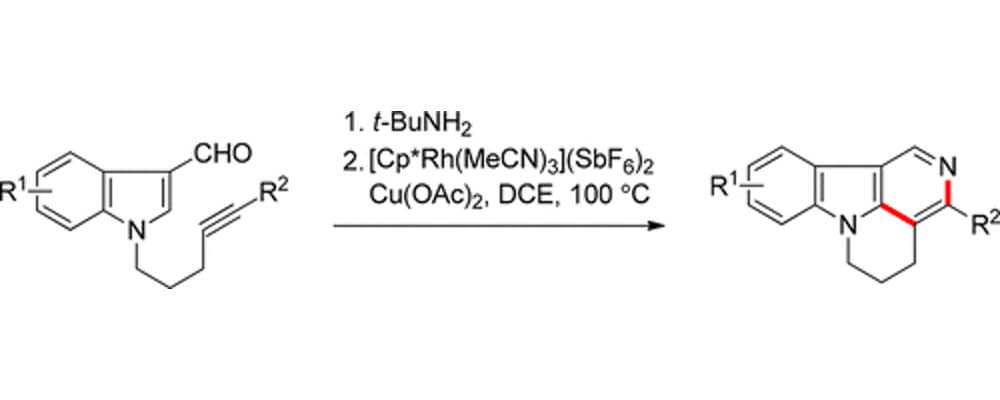
01/2018
Isocanthine Synthesis via Rh(III)-Catalyzed Intramolecular C–H Functionalization
RESEARCH
-
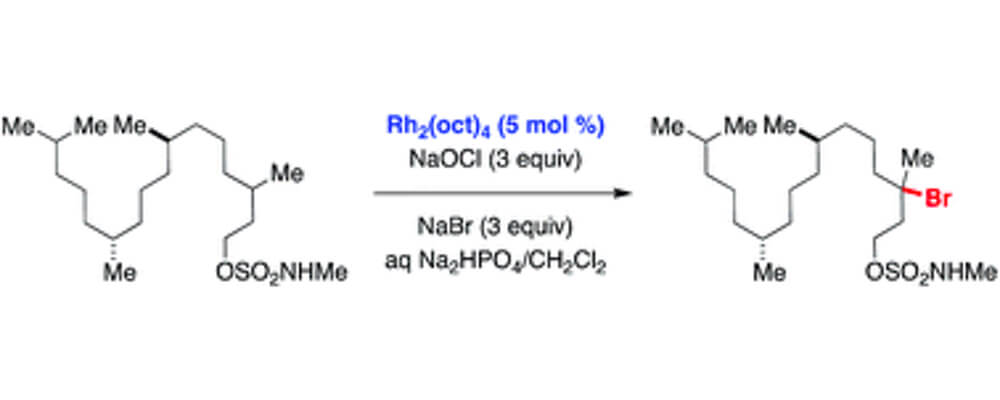
11/2017
Site-selective bromination of sp3 C–H bonds
RESEARCH
-
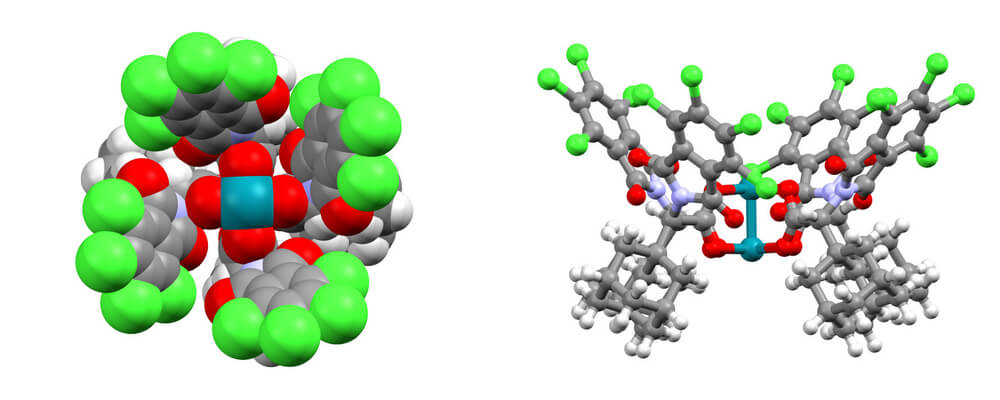
11/2017
Site-selective and stereoselective functionalization of non-activated tertiary C–H bonds
RESEARCH
-

02/2017
Oxidative Fragmentations and Skeletal Rearrangements of Oxindole Derivatives
RESEARCH
-
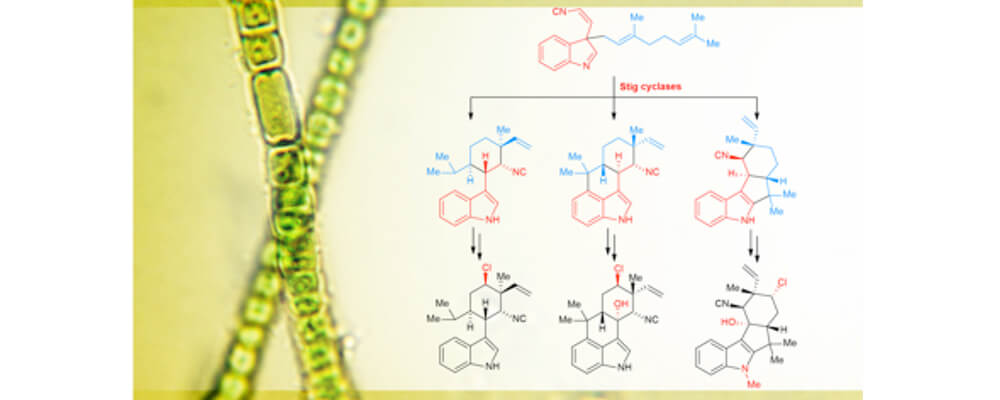
03/2017
Decoding cyclase-dependent assembly of hapalindole and fischerindole alkaloids
RESEARCH
-
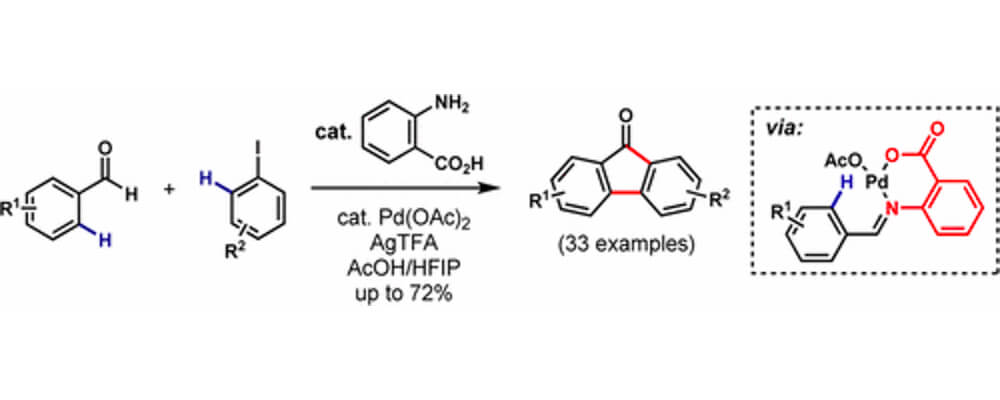
02/2017
Synthesis of Fluorenones from Benzaldehydes and Aryl Iodides: Dual C–H Functionalizations Using a Transient Directing Group
RESEARCH
-
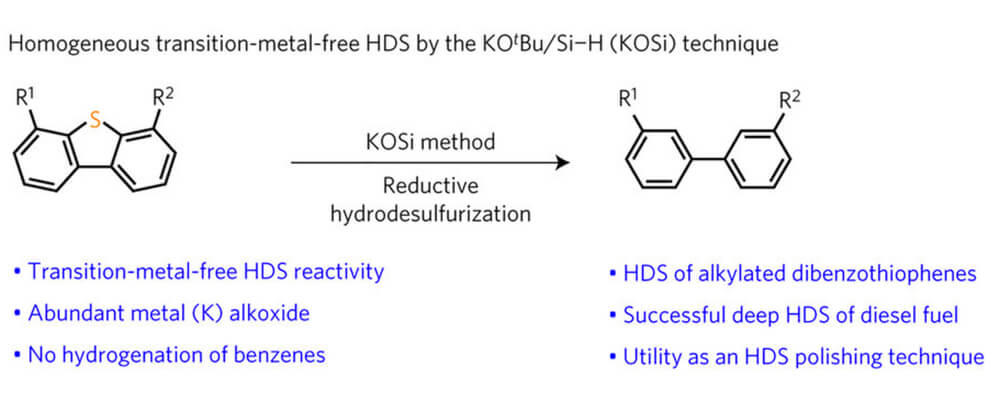
02/2017
A potassium tert-butoxide and hydrosilane system for ultra-deep desulfurization of fuels
RESEARCH
-
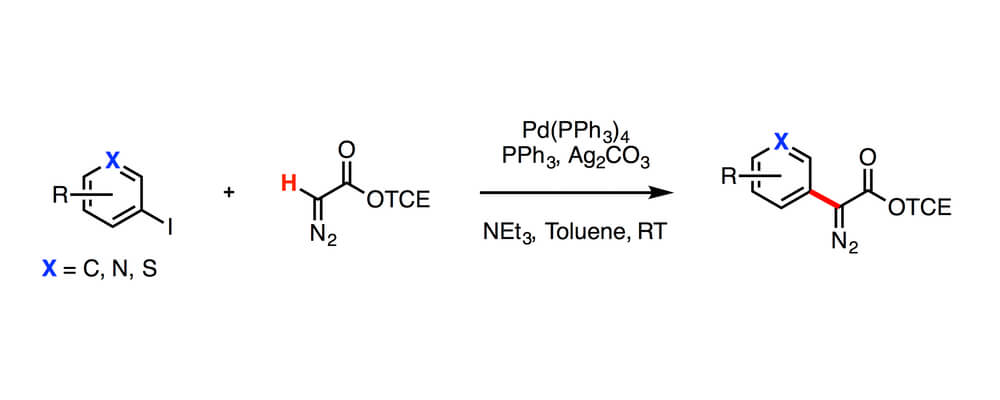
01/2017
Synthesis of 2,2,2,-Trichloroethyl Aryl- and Vinyldiazoacetates by Palladium-Catalyzed Cross-Coupling
RESEARCH
-
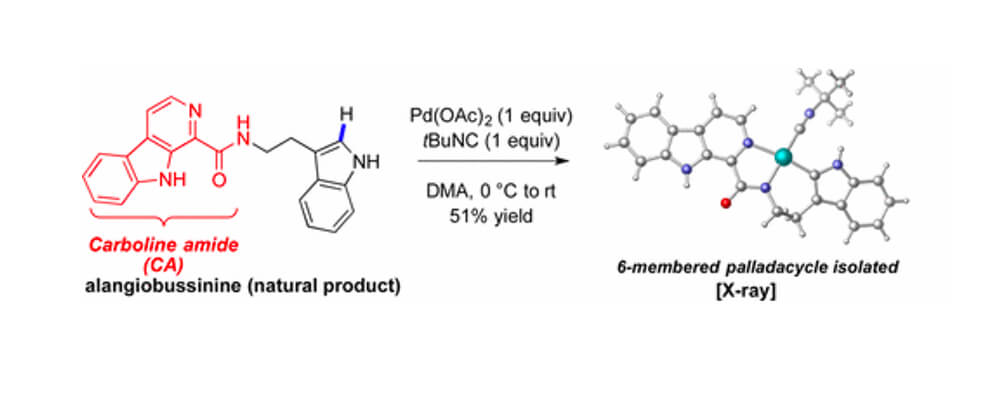
01/2017
β-Carboline Amides as Intrinsic Directing Groups for C(sp2)–H Functionalization
RESEARCH
-
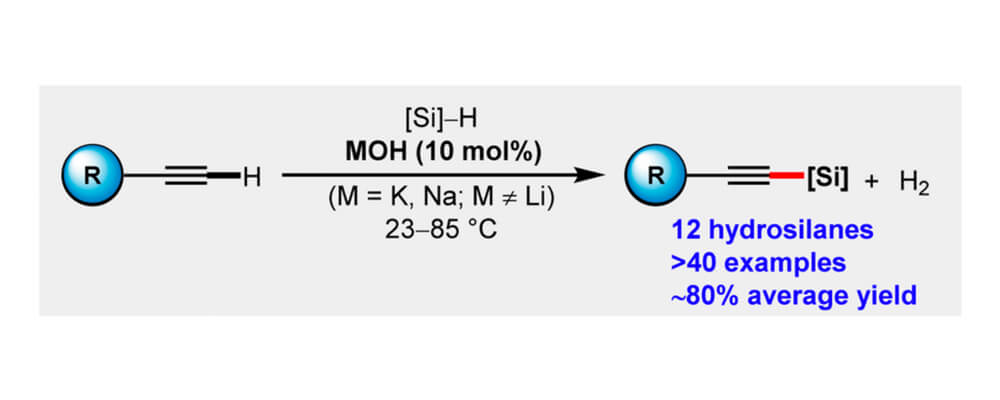
12/2016
Alkali Metal-Hydroxide-Catalyzed C(sp)–H Bond silylation
RESEARCH
-
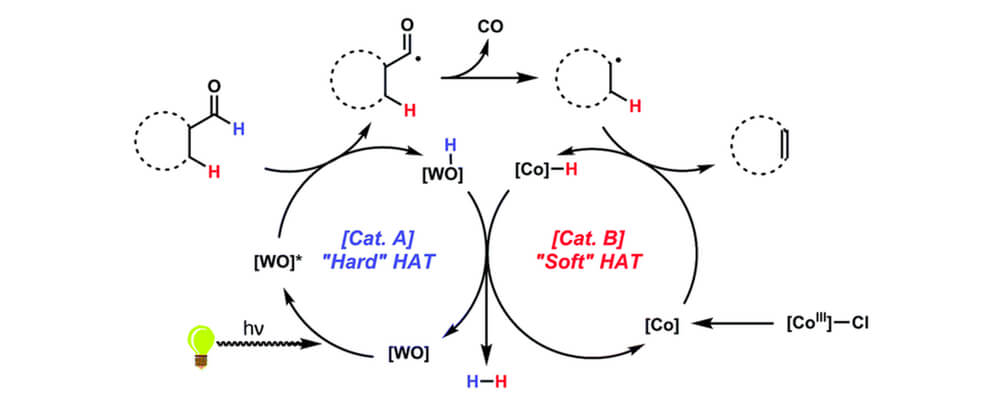
11/2016
Toward a mild dehydroformylation using base-metal catalysis
RESEARCH
-
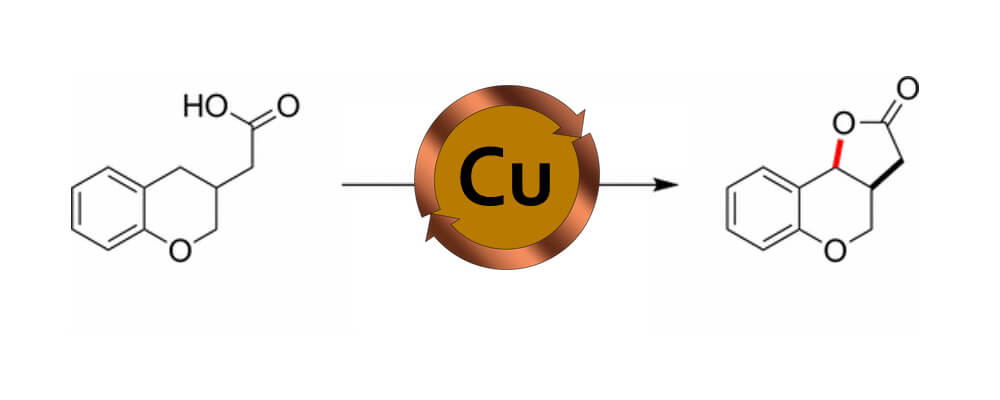
012/2016
Copper-Catalyzed Oxidative Cyclization of Carboxylic Acids
RESEARCH
-
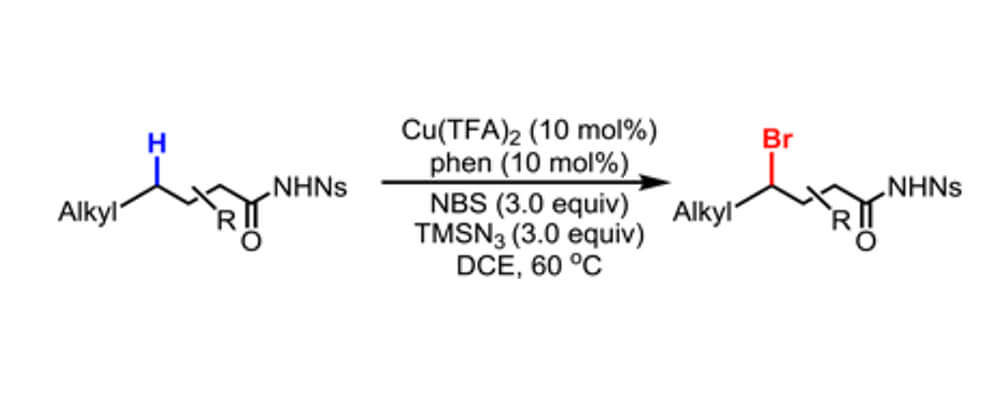
11/2016
Copper-Catalyzed Bromination of C(sp3)−H Bonds Distal to Functional Groups
RESEARCH
-
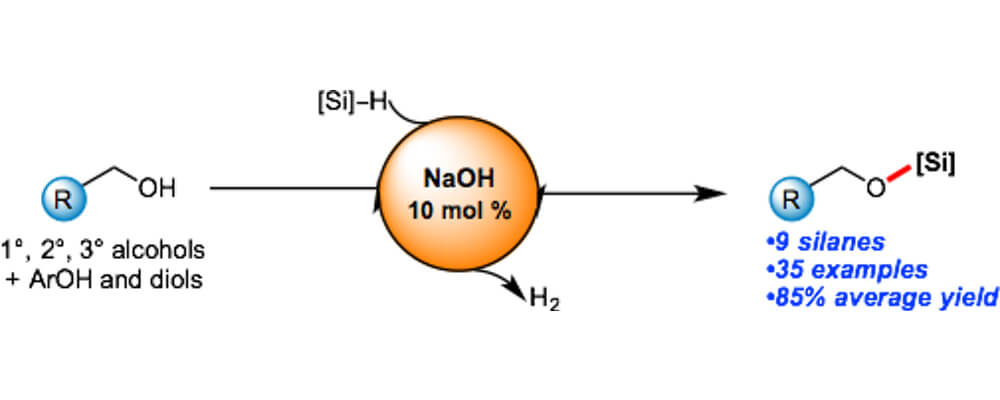
11/2016
Sodium Hydroxide Catalyzed Dehydrocoupling of Alcohols with Hydrosilanes
RESEARCH
-
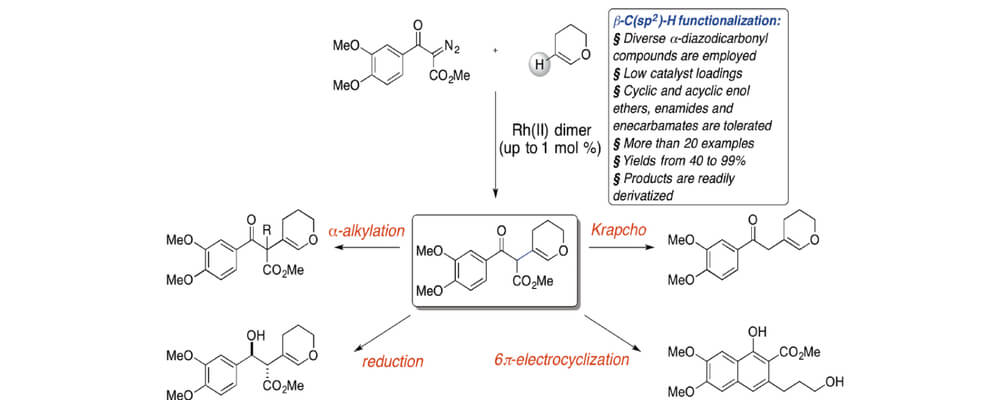
11/2016
Rh(II)-Catalyzed β-C(sp2)-H Alkylation of Enol Ethers, Enamides and Enecarbamates with α-Diazo Dicarbonyl Compounds
RESEARCH
-
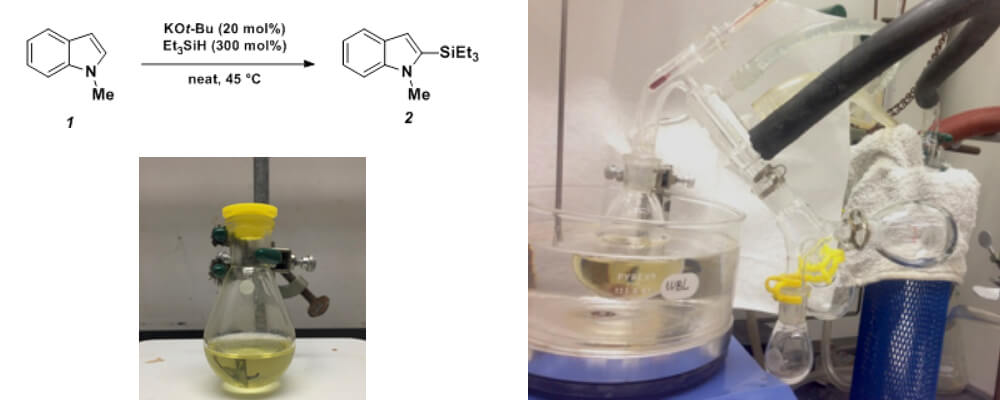
08/2016
Potassium tert-Butoxide-Catalyzed Dehydrogenative Cross-Coupling of Heteroarenes with Hydrosilanes
RESEARCH
-
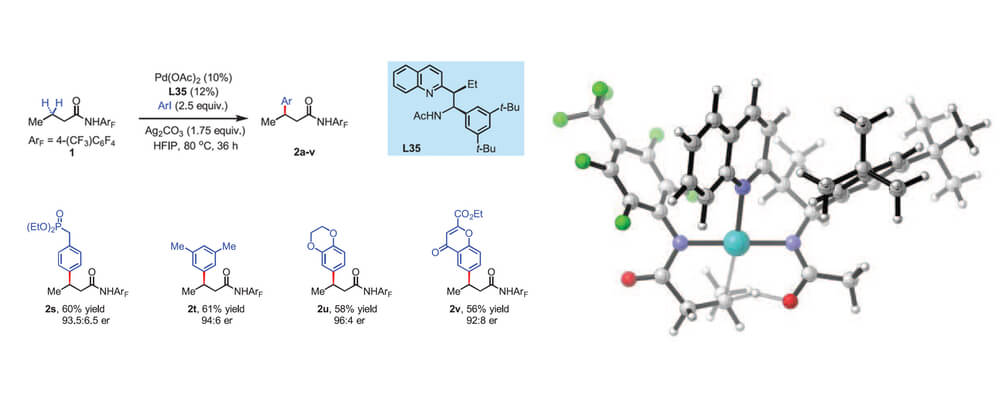
09/2016
Ligand-accelerated enantioselective methylene C(sp3)–H bond activation
RESEARCH
-
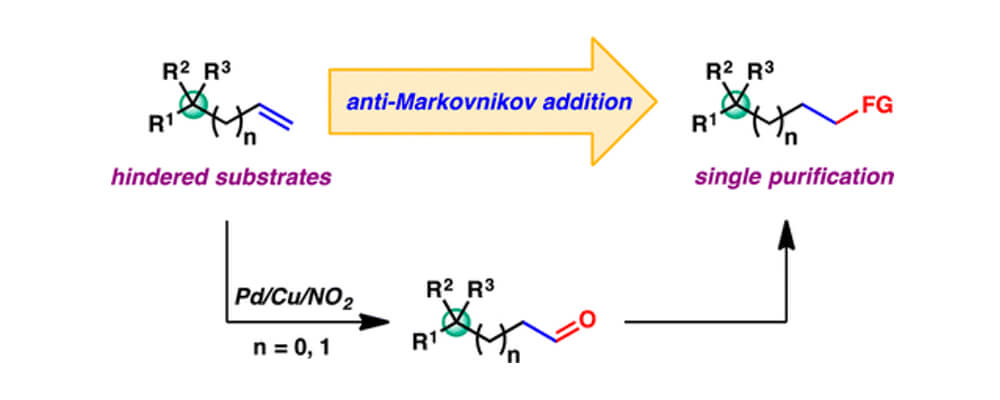
09/2016
Catalytic Anti-Markovnikov Transformations of Hindered Terminal Alkenes Enabled by Aldehyde-Selective Wacker-Type Oxidation
RESEARCH
-
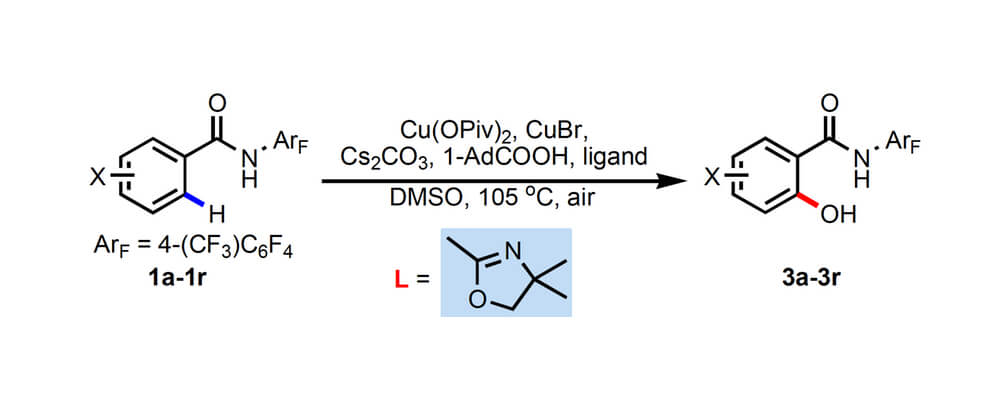
09/2016
Identification of Monodentate Oxazoline as a Ligand for Copper-Promoted ortho-C–H Hydroxylation and Amination
RESEARCH
-
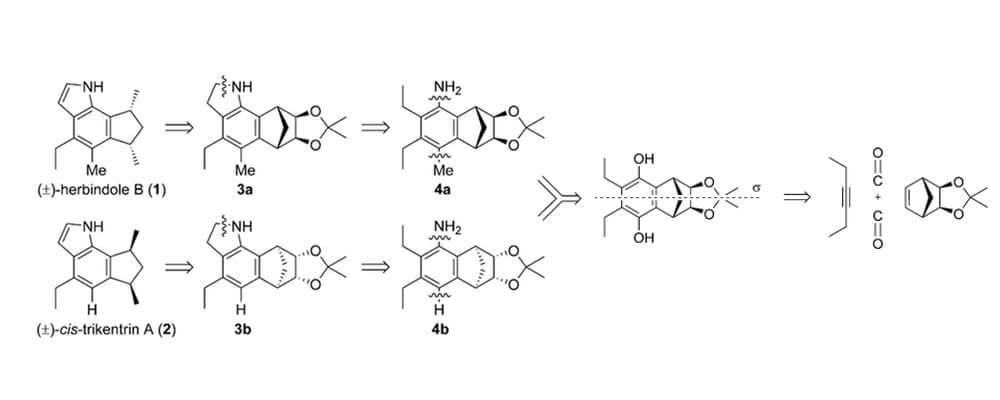
08/2015
Application of a Palladium-Catalyzed C−H Functionalization/ Indolization Method to Syntheses of cis-Trikentrin A and Herbindole B
RESEARCH
-
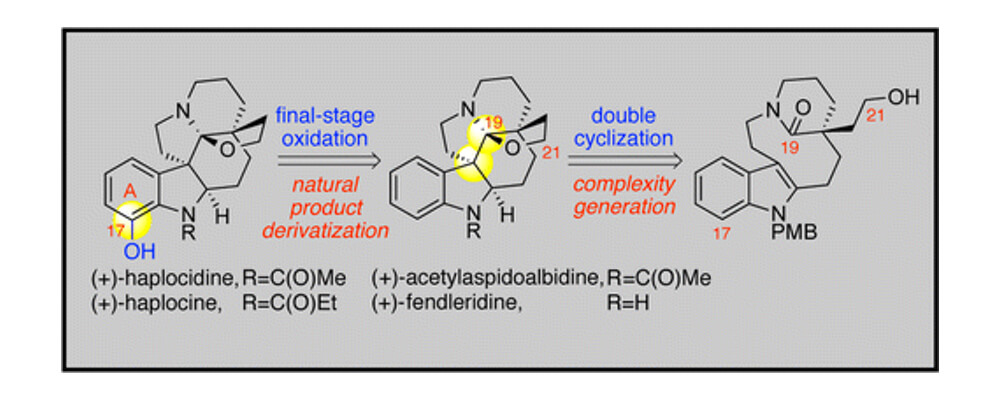
08/2016
Concise Total Syntheses of (+)-Haplocidine and (+)-Haplocine via Late-Stage Oxidation of (+)-Fendleridine Derivatives
RESEARCH
-
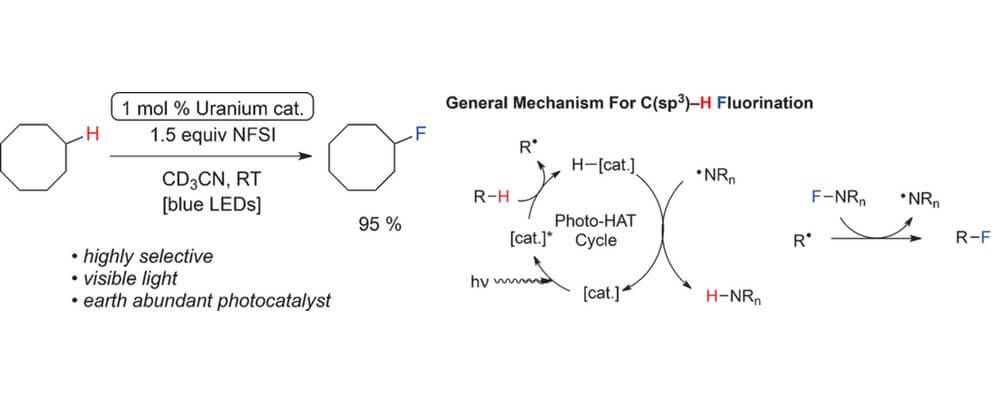
06/2016
The Uranyl Cation as a Visible-Light Photocatalyst for C(sp3)−H Fluorination
RESEARCH
-
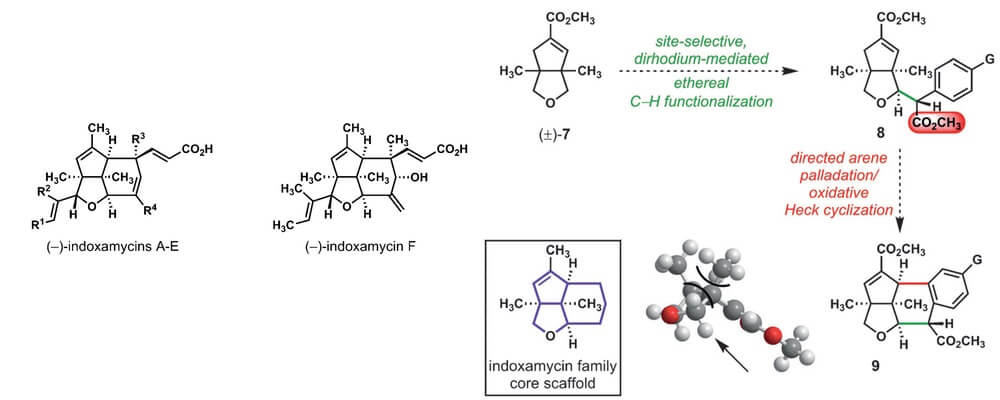
05/2016
Rapid Construction of a Benzo-Fused Indoxamycin Core Enabled by Site-Selective C−H Functionalizations
RESEARCH
-
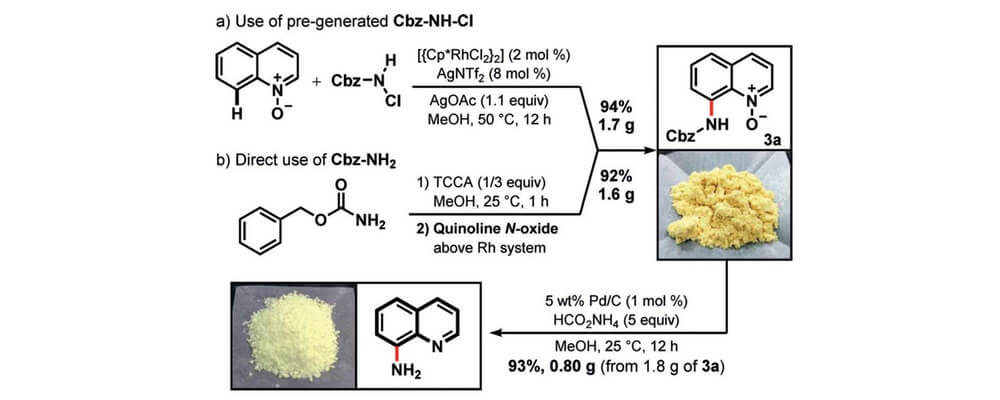
10/2015
Synthesis of 8-Aminoquinolines by Using Carbamate Reagents
RESEARCH
-
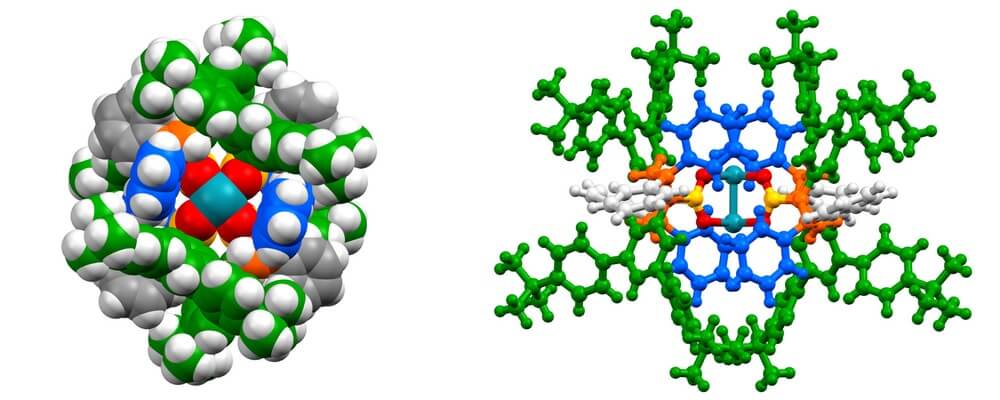
05/2016
Site Selective and Stereoselective Functionalization of Unactivated C–H Bonds
RESEARCH
-
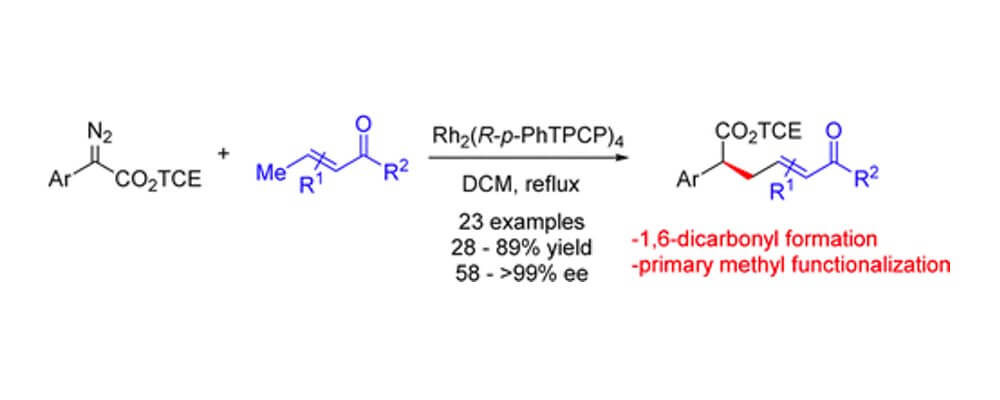
04/2016
Rhodium(II)-Catalyzed C–H Functionalization of Electron-Deficient Methyl Groups
RESEARCH
-
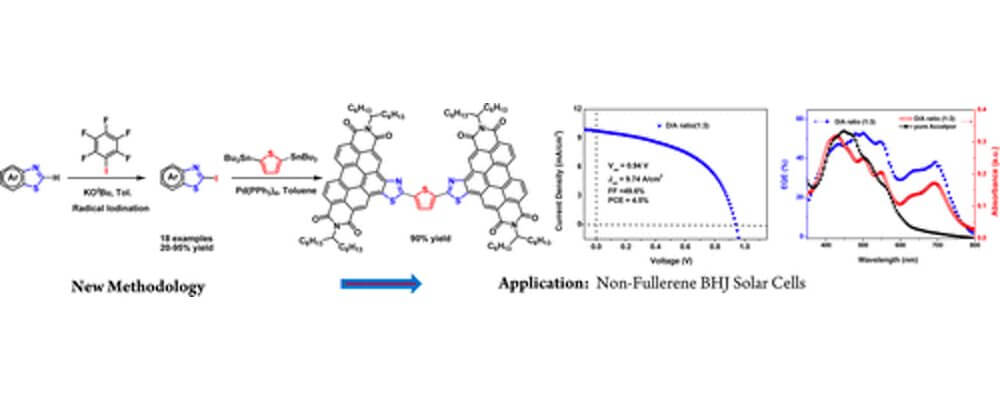
03/2016
KOtBu-Initiated Aryl C–H Iodination: A Powerful Tool for the Synthesis of High Electron Affinity Compounds
RESEARCH
-
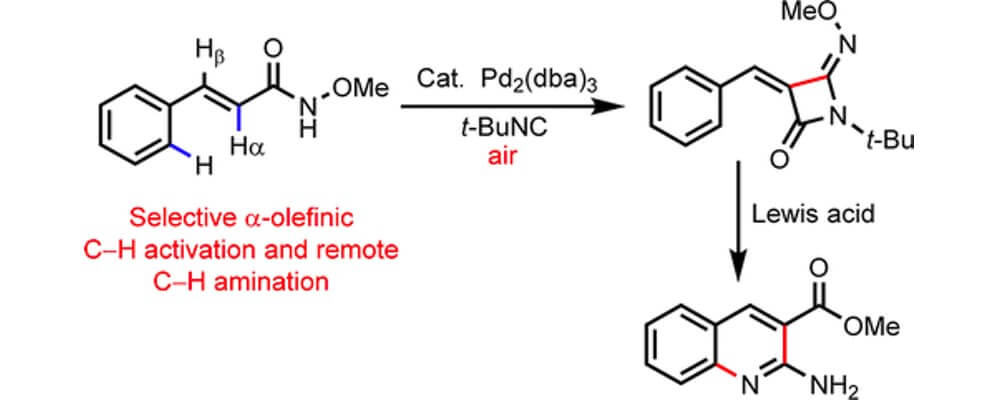
02/2016
Pd-Catalyzed α-Selective C–H Functionalization of Olefins: En Route to 4-Imino-β-Lactams
RESEARCH
-
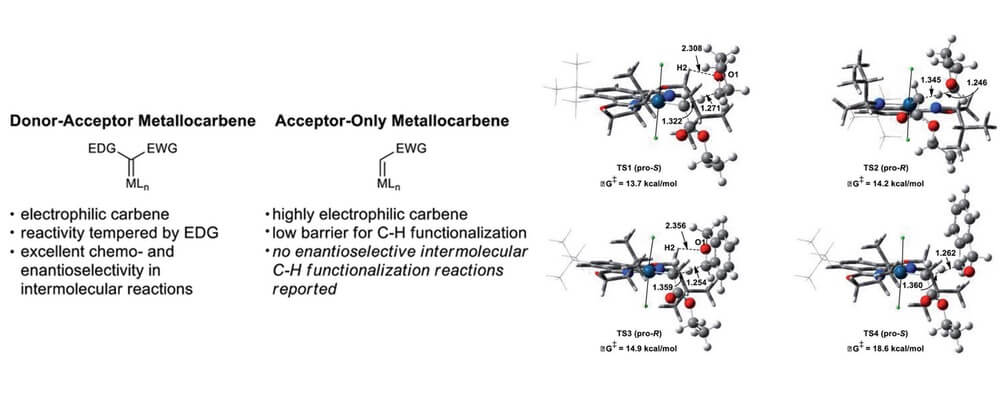
02/2016
Iridium(III)-bis(imidazolinyl)phenyl catalysts for enantioselective C–H functionalization with ethyl diazoacetate
RESEARCH
-
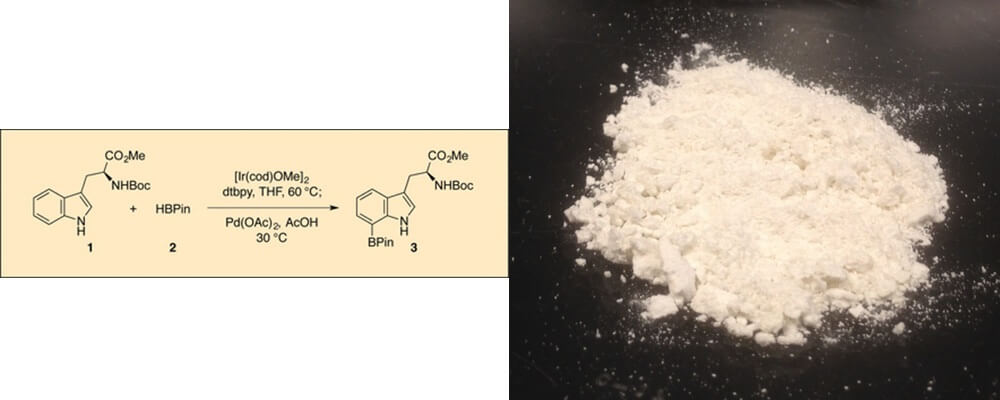
02/2016
Direct C7 Functionalization of Tryptophan.
RESEARCH
-
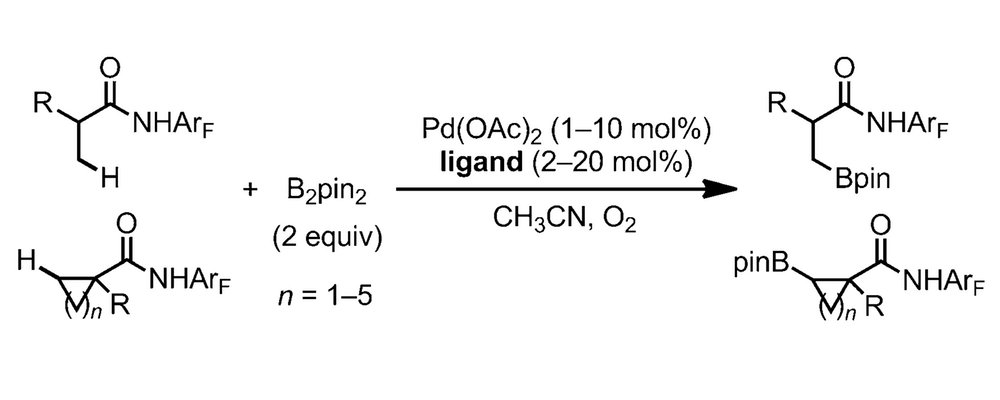
11/2015
Ligand-Promoted Borylation of C(sp3)–H Bonds with Palladium(II) Catalysts
RESEARCH
-
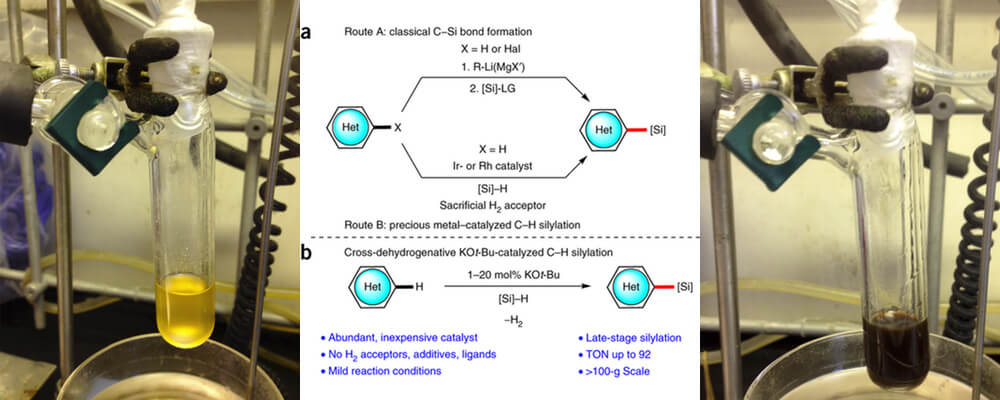
10/2015
Catalytic C–H bond silylation of aromatic heterocycles
RESEARCH
-
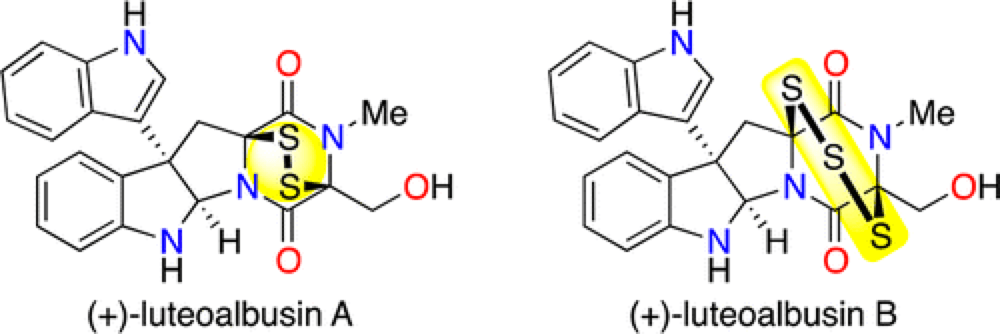
08/2015
Concise Total Synthesis of (+)-Luteoalbusins A and B
RESEARCH
-
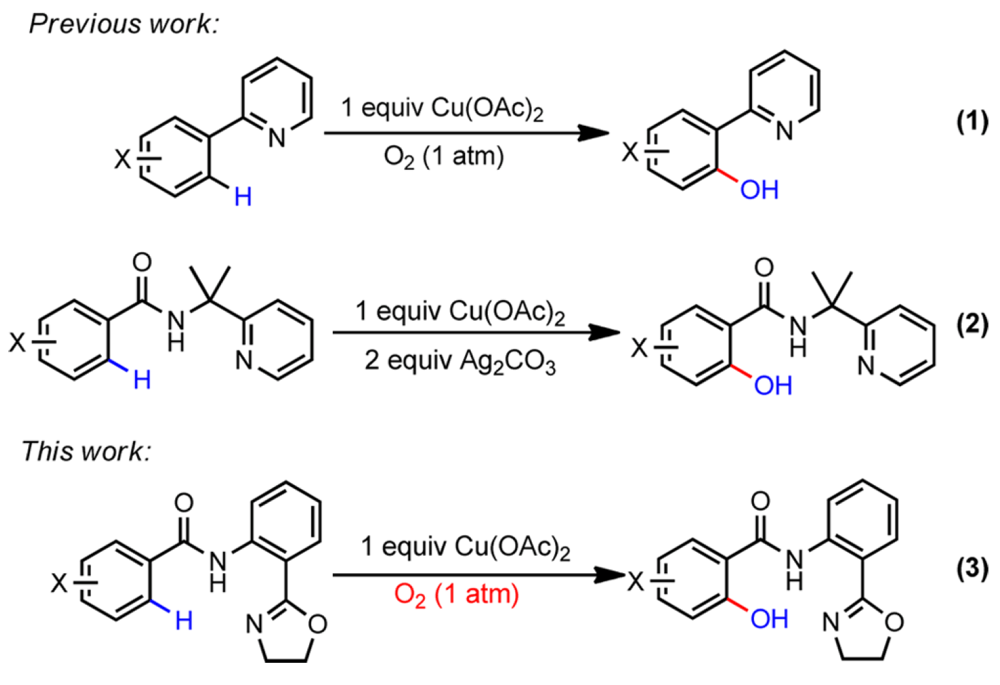
08/2015
Cu(II)-Mediated C(sp2)–H Hydroxylation
RESEARCH
-

07/2015
Palladium(II)-Catalyzed Allylic C–H Oxidation of Hindered Substrates Featuring Tunable Selectivity Over Extent of Oxidation
RESEARCH
-

07/2015
Ligand-Controlled Para-Selective C–H Arylation of Monosubstituted Arenes
RESEARCH
-
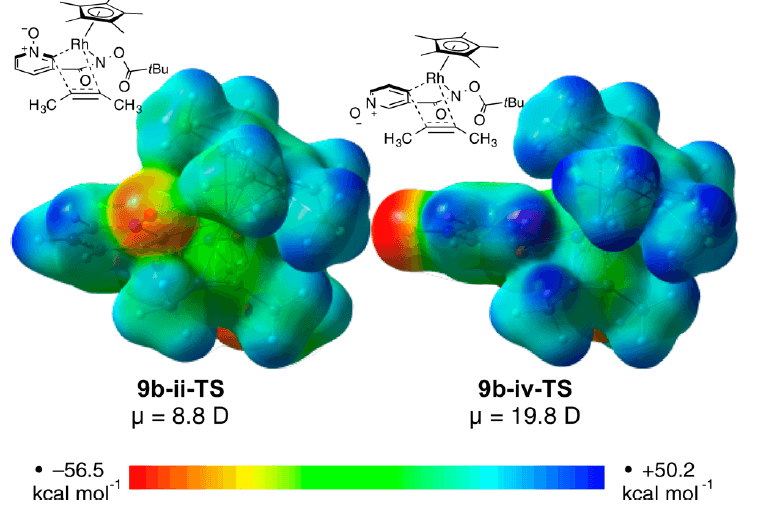
07/2015
Pyridine N-Oxide vs Pyridine Substrates for Rh(III)-Catalyzed Oxidative C–H Bond Functionalization
RESEARCH
-
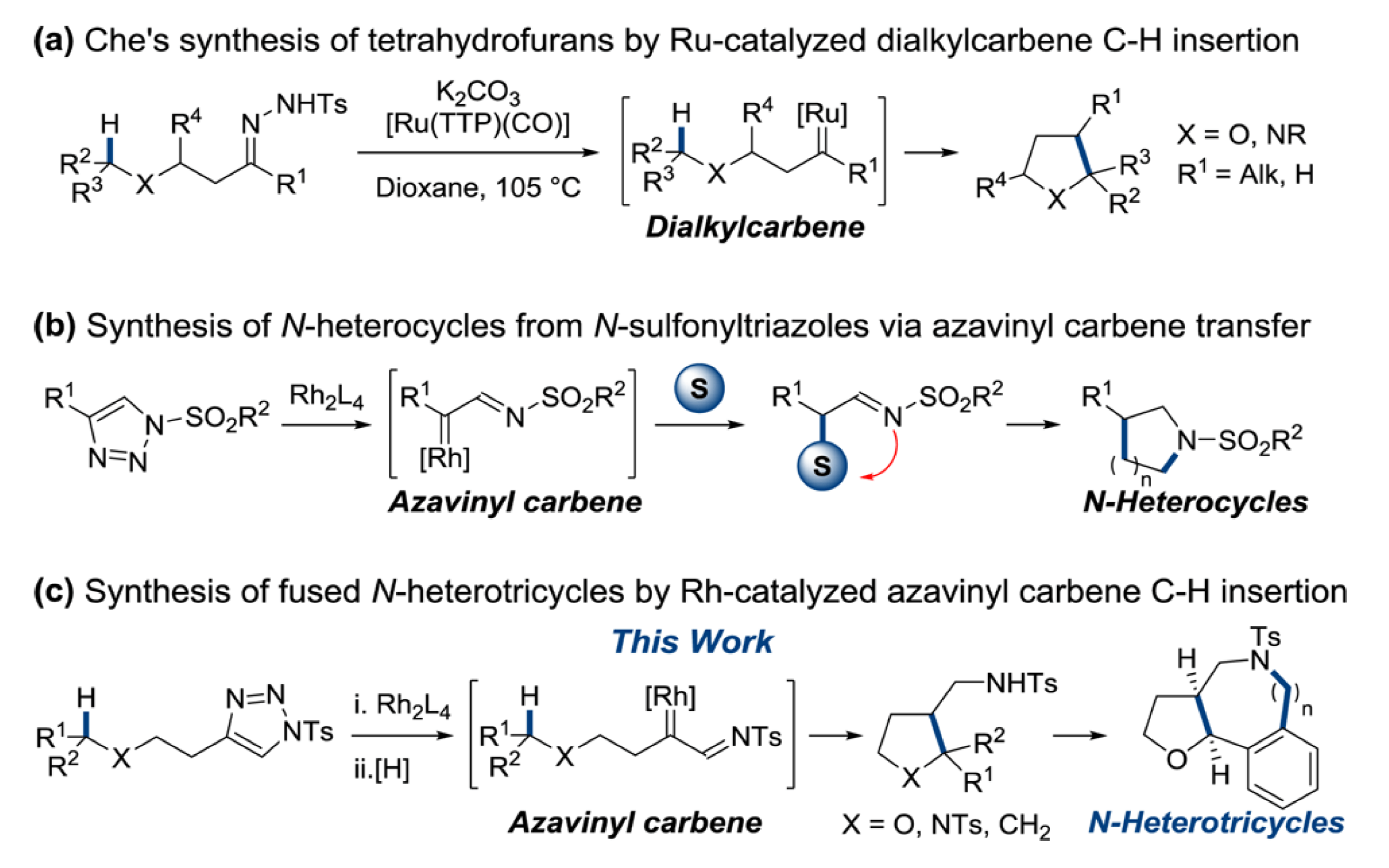
06/2015
Stereodivergent Intramolecular C(sp3)–H Functionalization of Azavinyl Carbenes
RESEARCH
-
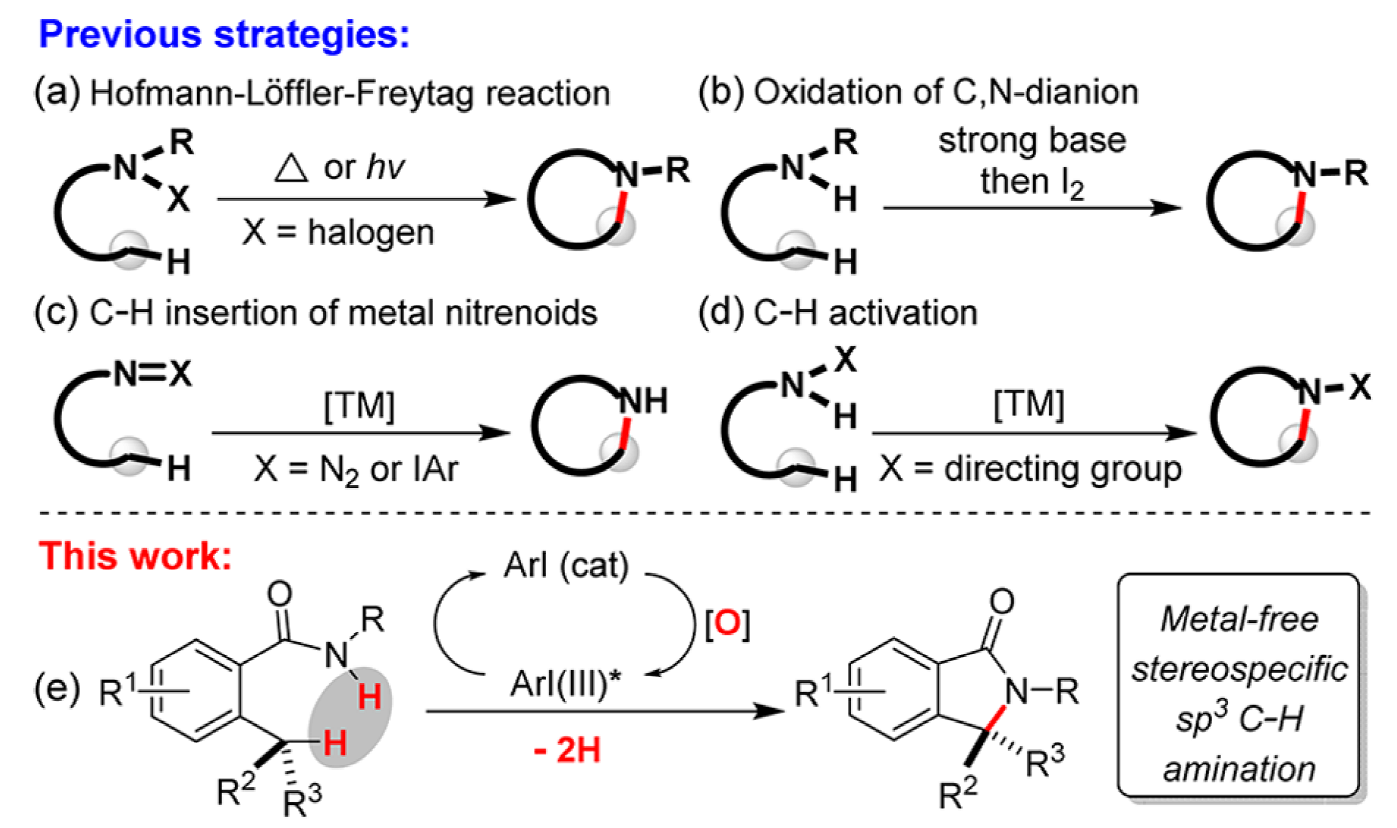
06/2015
Iodoarene-Catalyzed Stereospecific Intramolecular sp3 C–H Amination
RESEARCH
-

06/2015
Enantioselective dirhodium(II)-catalyzed cyclopropanations with trimethylsilylethyl and trichloroethyl aryldiazoacetates
RESEARCH
-
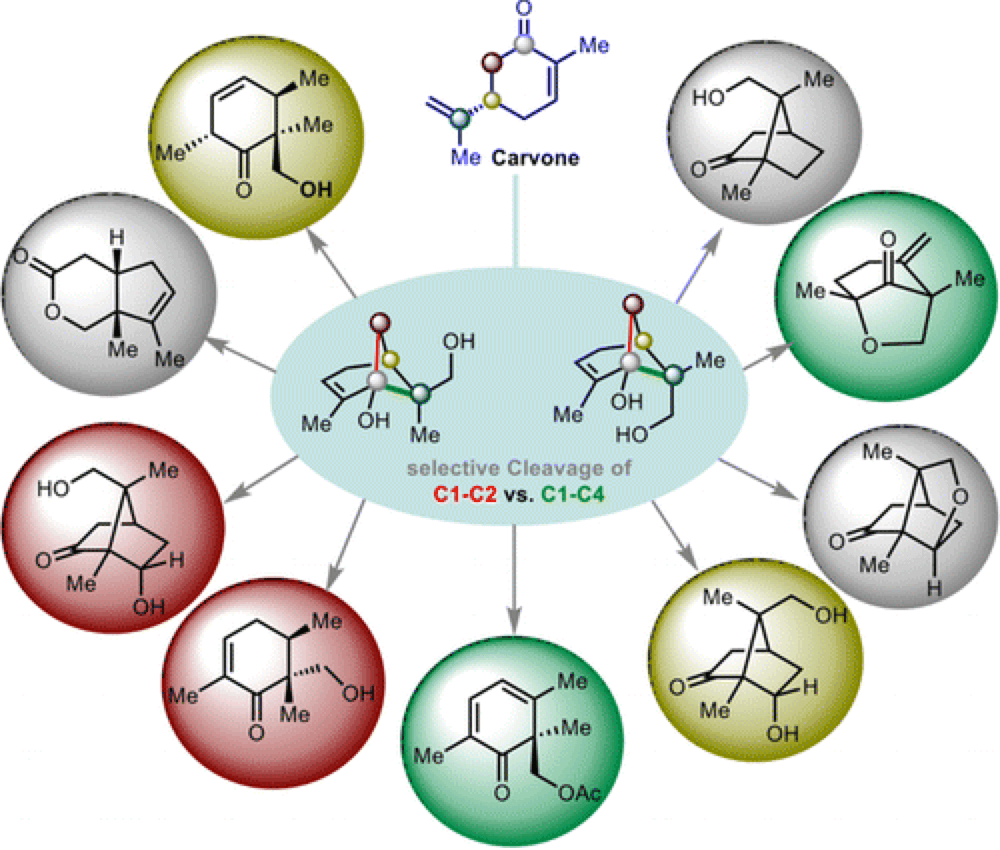
05/2015
Selective C–C and C–H Bond Activation/Cleavage of Pinene Derivatives
RESEARCH
-

09/2014
Vicinal Diamination of Alkenes under Rh-Catalysis
RESEARCH
-
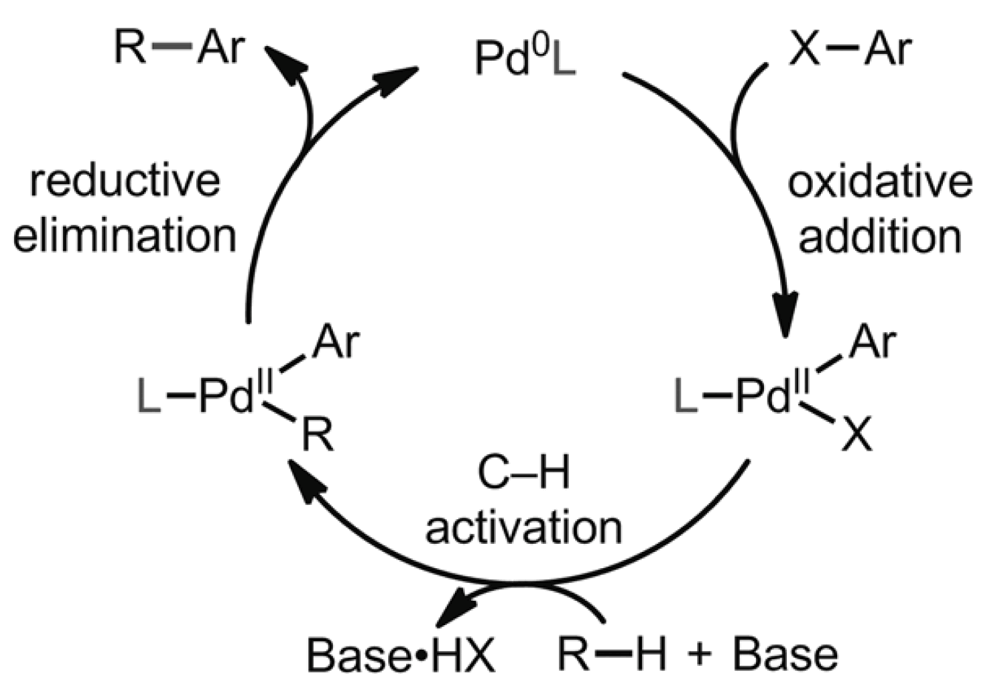
04/2015
Palladium(0)/PAr3-Catalyzed Intermolecular Amination of C(sp3)–H Bonds
RESEARCH
-
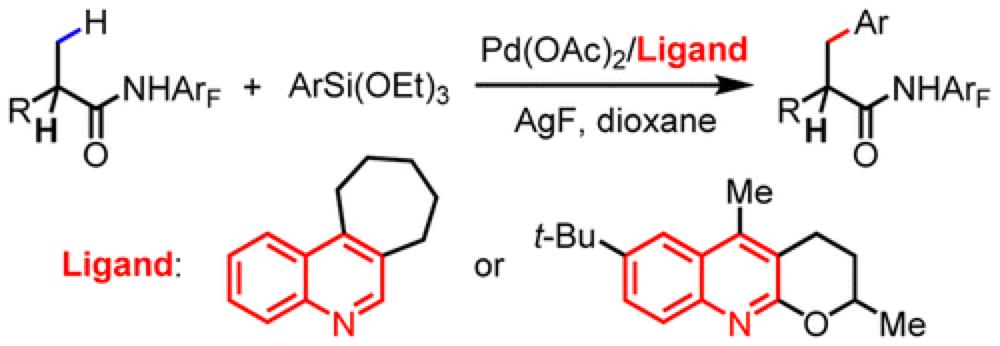
03/2015
Ligand-Enabled Cross-Coupling of C(sp3)−H Bonds with Arylsilanes
RESEARCH
-
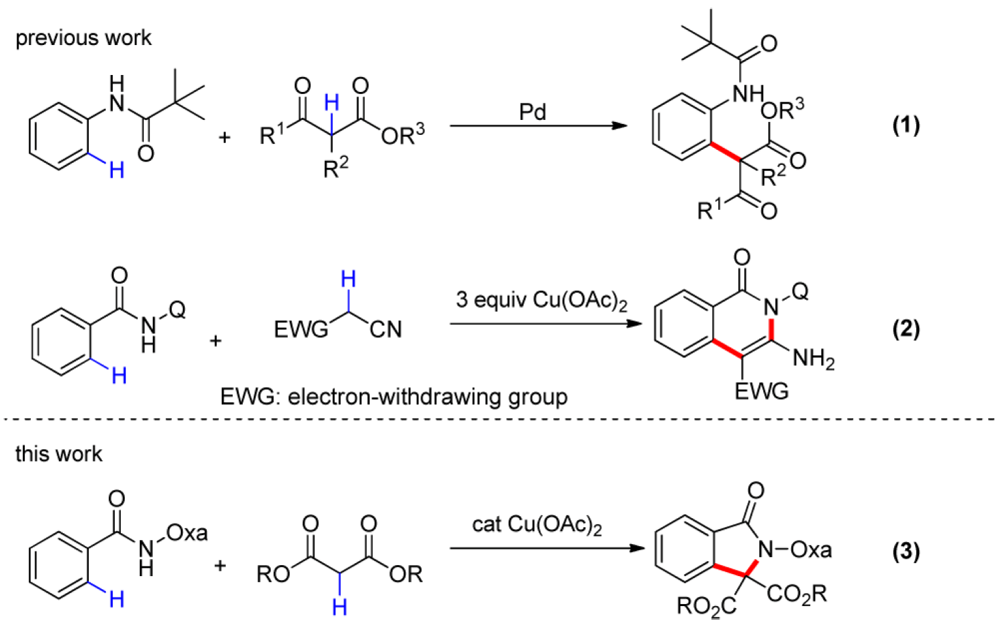
02/2015
Cu(II)-Catalyzed Coupling of Aromatic C–H Bonds with Malonates
RESEARCH
-
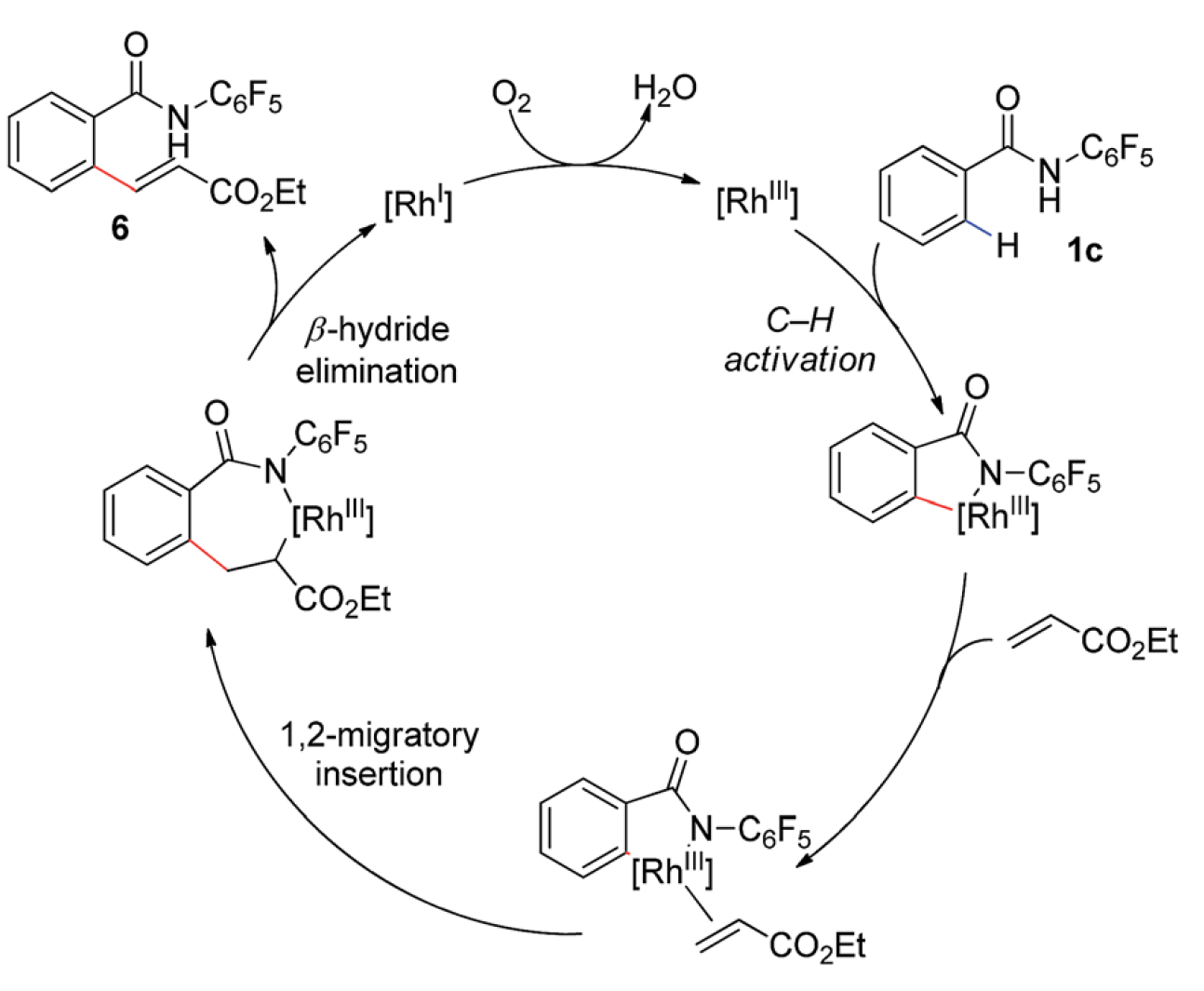
01/2015
Rh(III)-catalyzed C–H olefination of N-pentafluoroaryl benzamides
RESEARCH
-
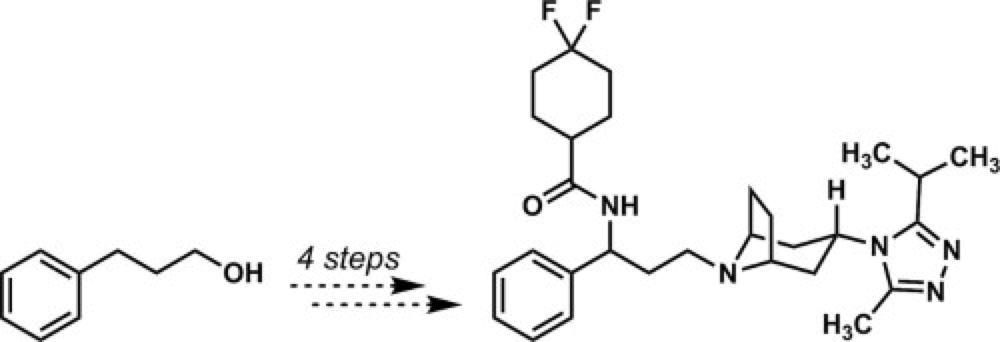
06/2015
An expedient synthesis of maraviroc (UK-427,857) via C–H functionalization
RESEARCH
-
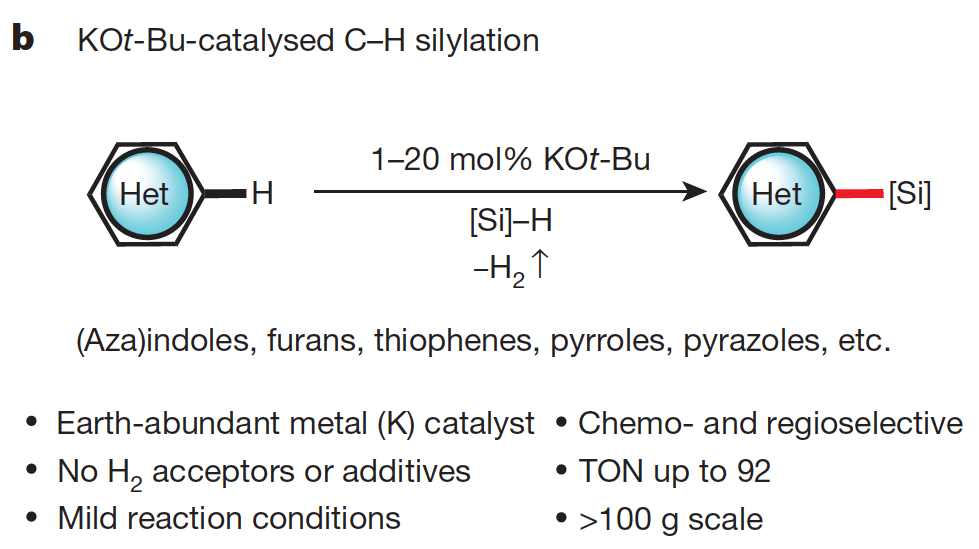
01/2015
Silylation of C–H bonds in aromatic heterocycles by an Earth-abundant metal catalyst
RESEARCH
-
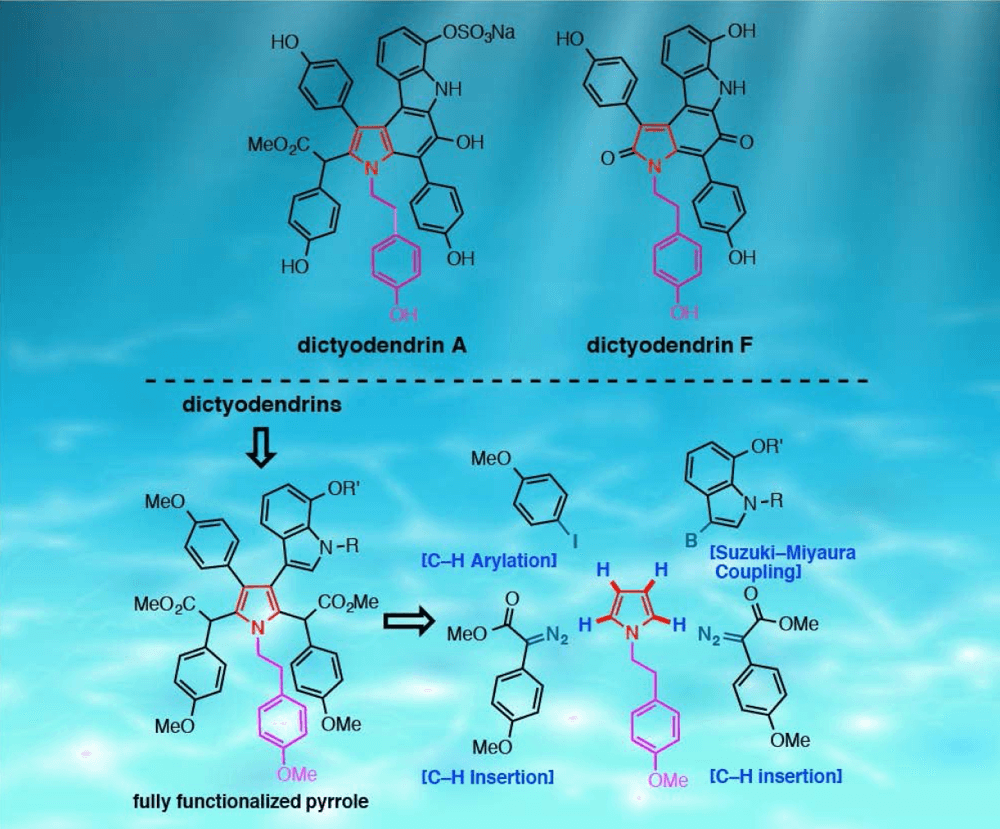
01/2015
Concise Syntheses of Dictyodendrins A and F by C–H Functionalization
RESEARCH
-
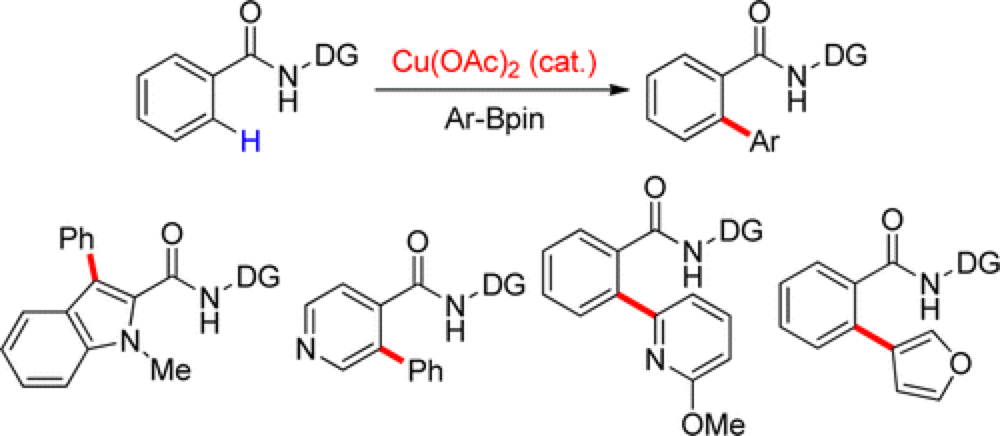
10/2014
Cu(OAc)2-Catalyzed Coupling of Aromatic C–H Bonds with Arylboron Reagents
RESEARCH
-
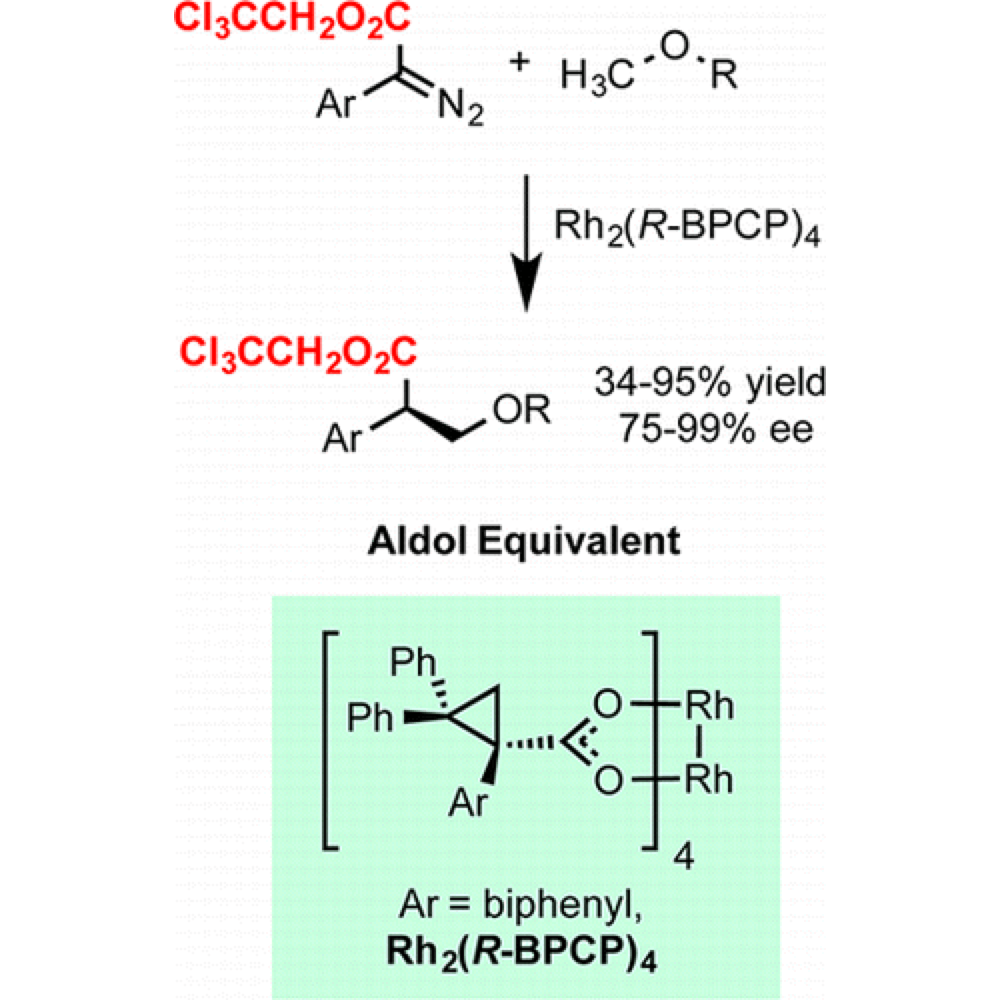
12/2014
2,2,2-Trichloroethyl Aryldiazoacetates as Robust Reagents for the Enantioselective C–H Functionalization of Methyl Ethers
RESEARCH
-
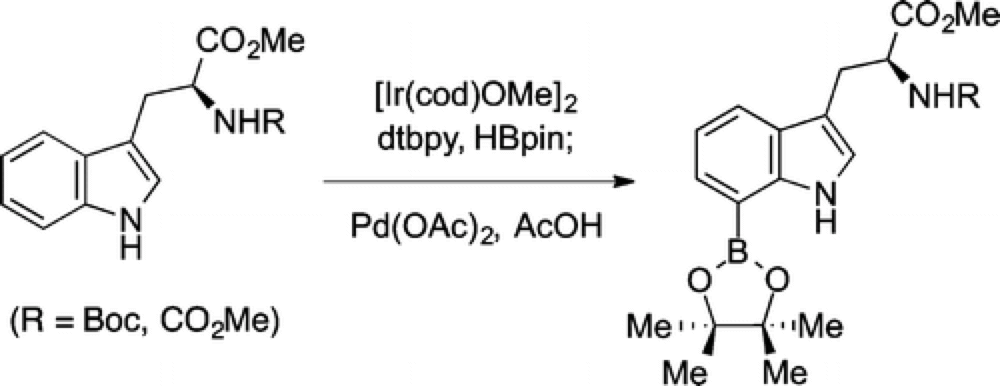
11/2014
C7-Derivatization of C3-Alkylindoles Including Tryptophans and Tryptamines
RESEARCH
-
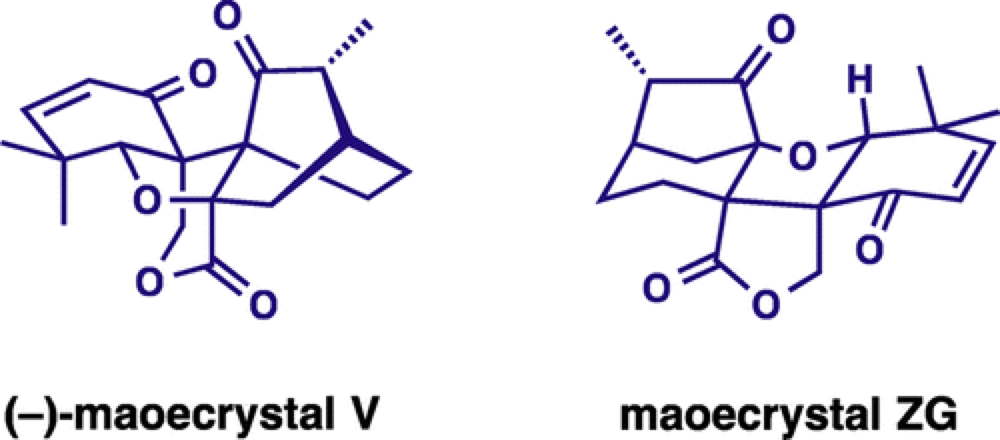
11/2014
Enantioselective Synthesis of (–)-Maoecrystal V by Enantiodetermining C—H Functionalization
RESEARCH
-

09/2014
Complex Hexacyclic Compounds via a Tandem Rh(II)-Catalyzed Double-Cyclopropanation/Cope Rearrangement/Diels–Alder Reaction
RESEARCH
-

08/2014
Exceedingly Fast Copper(II)-Promoted ortho C–H Trifluoromethylation of Arenes using TMSCF3
RESEARCH
-
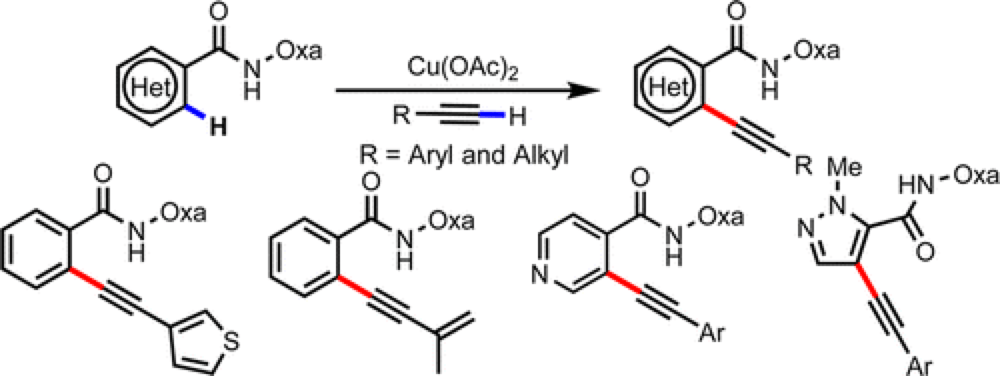
08/2014
Cu(II)-Mediated Ortho C–H Alkynylation of (Hetero)Arenes with Terminal Alkynes
RESEARCH
-
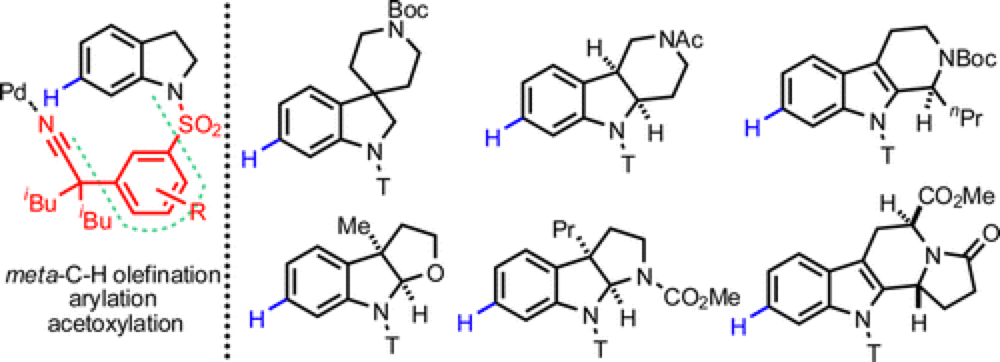
07/2014
Pd(II)-Catalyzed meta-C–H Olefination, Arylation, and Acetoxylation of Indolines Using a U-Shaped Template
RESEARCH
-

05/2014
Role of Ortho-Substituents on Rhodium-Catalyzed Asymmetric Synthesis of β-Lactones by Intramolecular C–H Insertions of Aryldiazoacetates
RESEARCH
-

07/2014
Manganese terpyridine artificial metalloenzymes for benzylic oxygenation and olefin epoxidation
RESEARCH
-
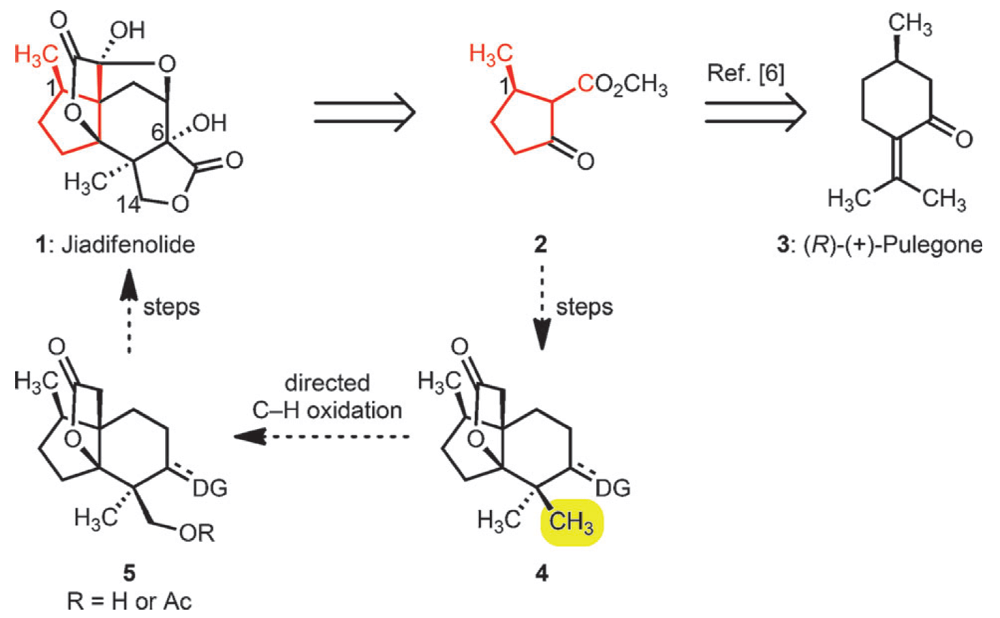
04/2014
An Enantiospecific Synthesis of Jiadifenolide
RESEARCH
-
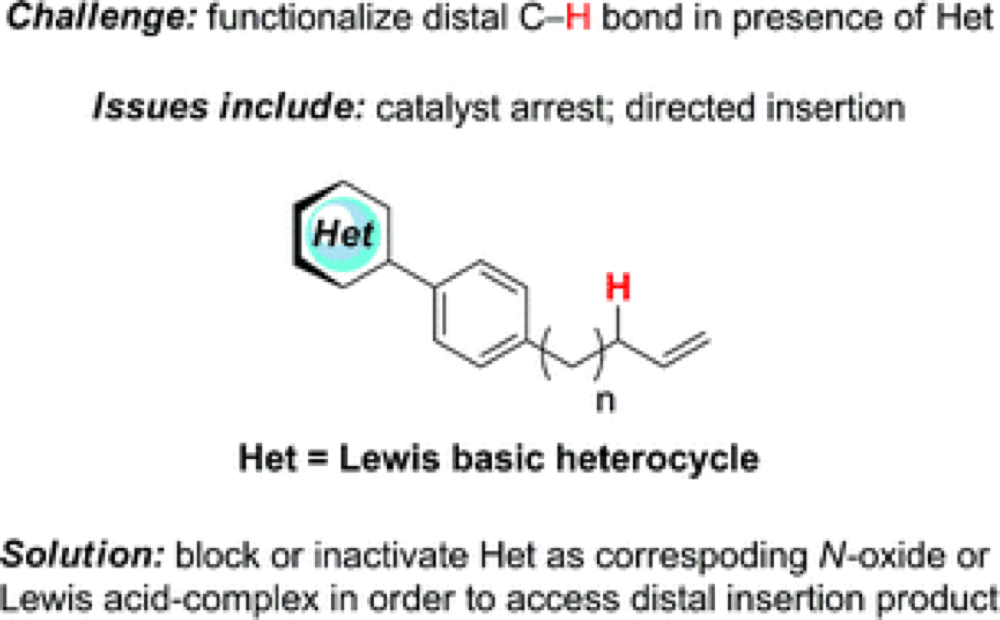
02/2014
Non-Directed Allylic C–H Acetoxylation in the Presence of Lewis Basic Heterocycles
RESEARCH
-
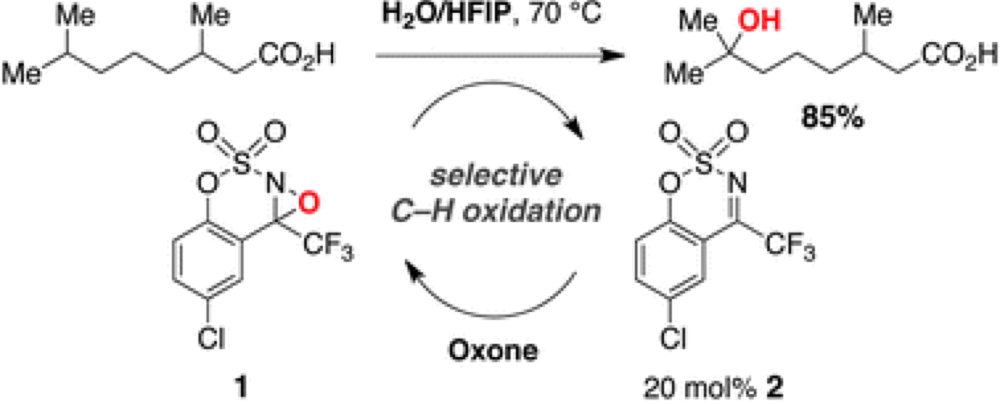
12/2013
Organocatalytic C–H hydroxylation with Oxone enabled by an aqueous fluoroalcohol solvent system
RESEARCH
-
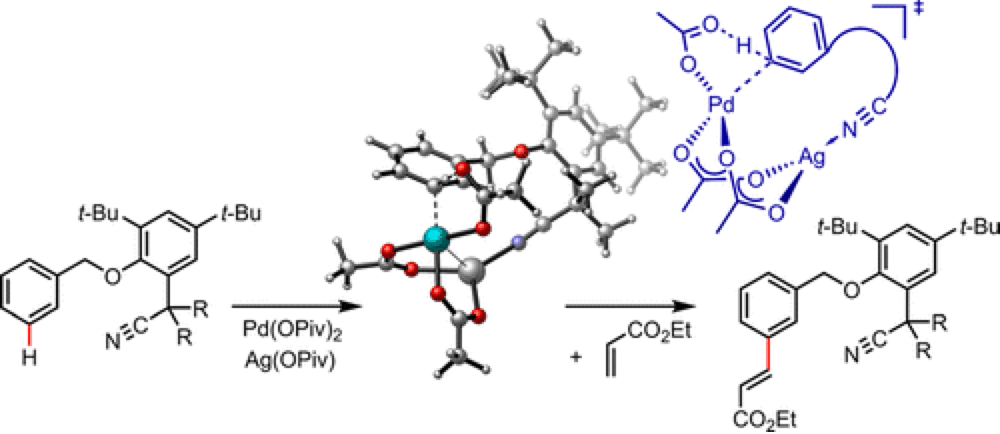
12/2013
Pd-Catalyzed meta-Selective C–H Activation with a Nitrile-Containing Template: Computational Study on Mechanism and Origins of Selectivity
RESEARCH
-

11/2013
Rhodium(II)-Catalyzed Stereoselective Synthesis of Allylsilanes
RESEARCH
-
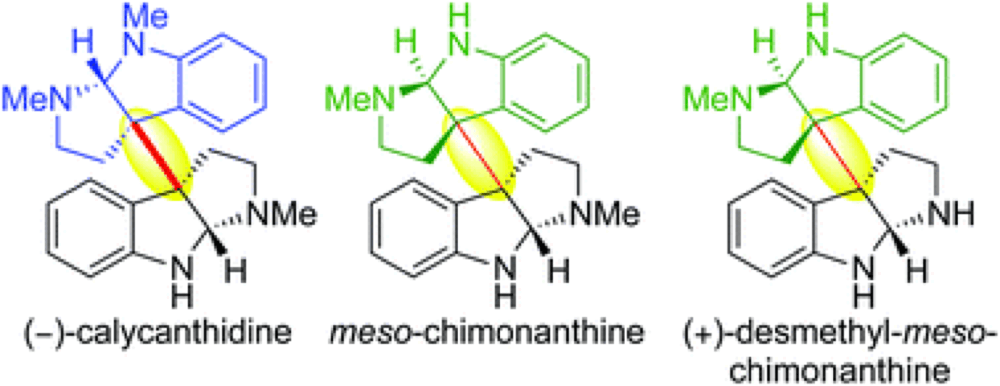
09/2013
Application of diazene-directed fragment assembly to the total synthesis and stereochemical assignment of (+)-desmethyl-meso-chimonanthine and related heterodimeric alkaloids
RESEARCH
-

09/2013
Selective Intermolecular Amination of C-H Bonds at Tertiary Carbon Centers
RESEARCH
-
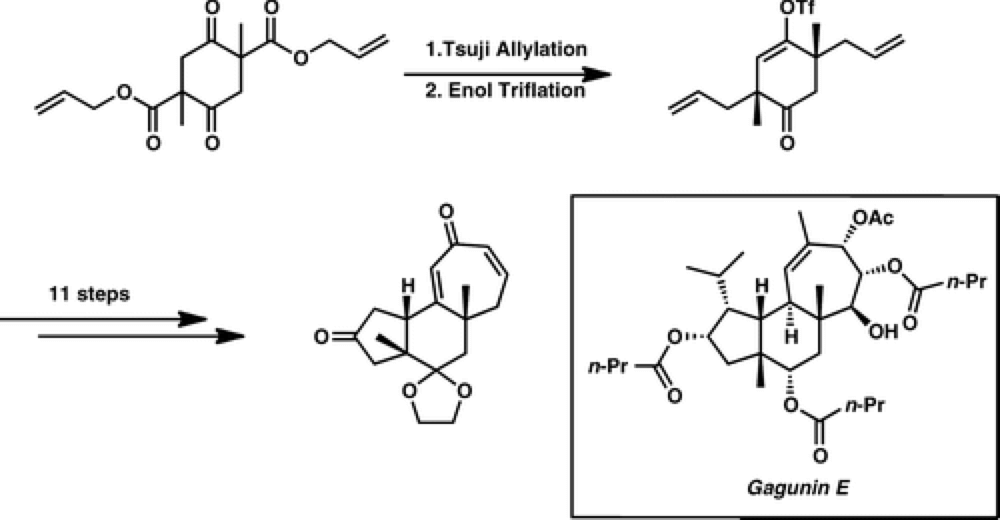
06/2013
Enantioselective Synthesis of the 5–6–7 Carbocyclic Core of the Gagunin Diterpenoids
RESEARCH
-

06/2013
C-H Functionalization Logic Enables a Synthesis of (+)-Hongoquercin A and Related Compounds
RESEARCH
-
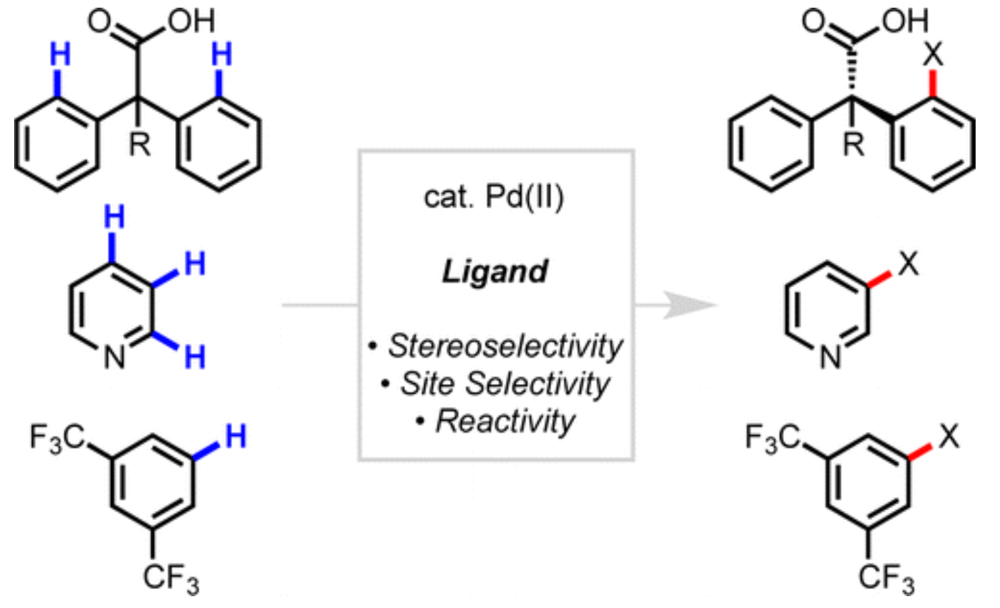
04/2013
Developing Ligands for Palladium(II)-Catalyzed C–H Functionalization: Intimate Dialogue between Ligand and Substrate
RESEARCH
-

04/2013
Sequential C–H Functionalization Reactions for the Enantioselective Synthesis of Highly Functionalized 2,3-Dihydrobenzofurans
RESEARCH
-

02/2013
Palladium(0)-Catalyzed Alkynylation of C(sp3)–H Bonds
RESEARCH
-

10/2012
Synthesis of Differentially Substituted 1,2-Diamines through Advances in C–H Amination Technology
RESEARCH
-

07/2011
Combined C-H Functionalization/Cope Rearrangement with Vinyl Ethers as a Surrogate for the Vinylogous Mukaiyama Aldol Reaction
RESEARCH
-
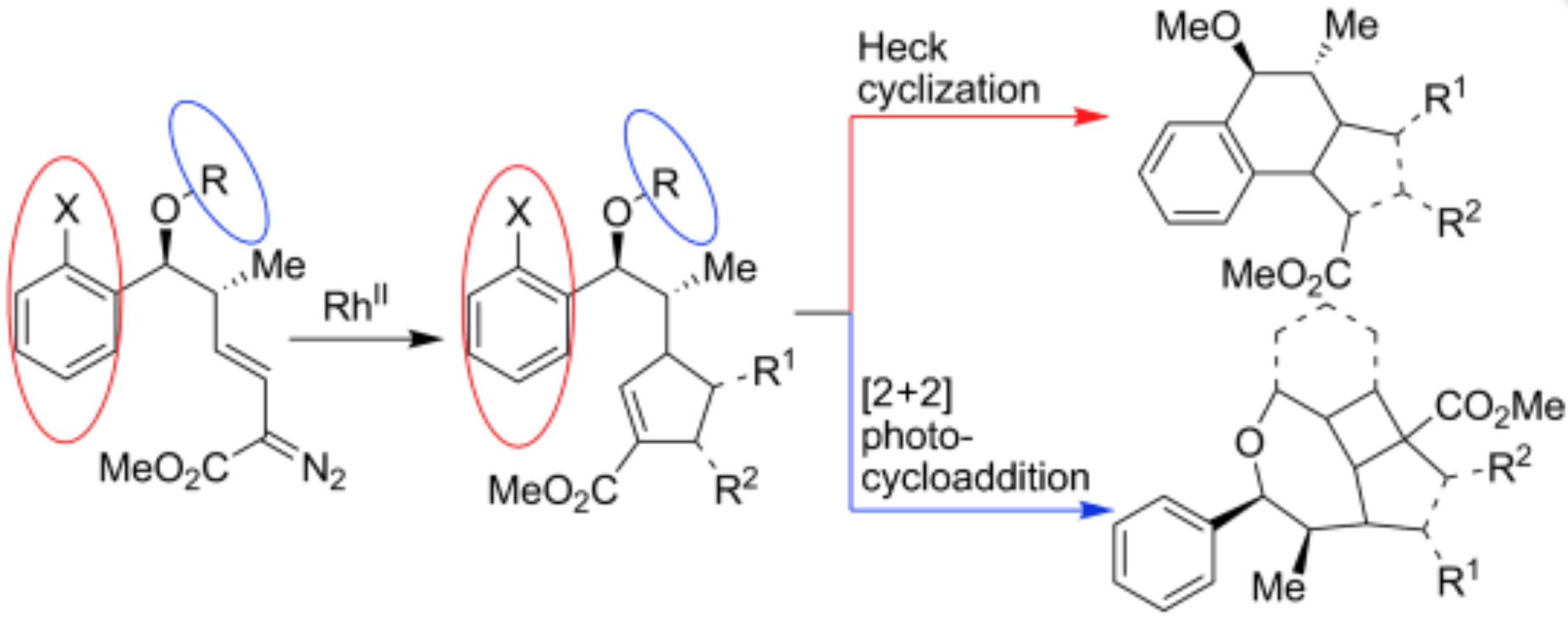
05/2011
Sequential Transformations to Access Polycyclic Chemotypes
RESEARCH
-

04/2011
Divergent C–H Functionalizations Directed by Sulfonamide Pharmacophores: Late-Stage Diversification as a Tool for Drug Discovery
RESEARCH
-
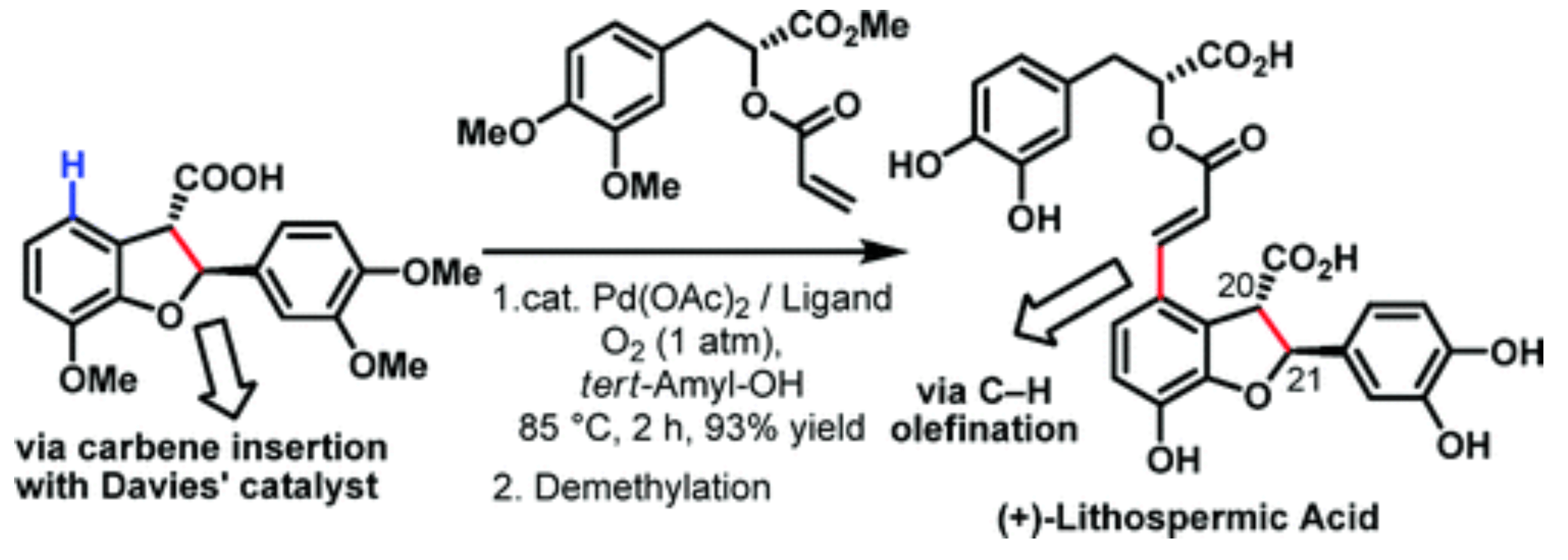
03/2011
Highly Convergent Total Synthesis of (+)-Lithospermic Acid via a Late-Stage Intermolecular C-H Olefination
RESEARCH
-

01/2011
Diverting non-haem iron catalysed aliphatic C–H hydroxylations towards desaturations
RESEARCH
-
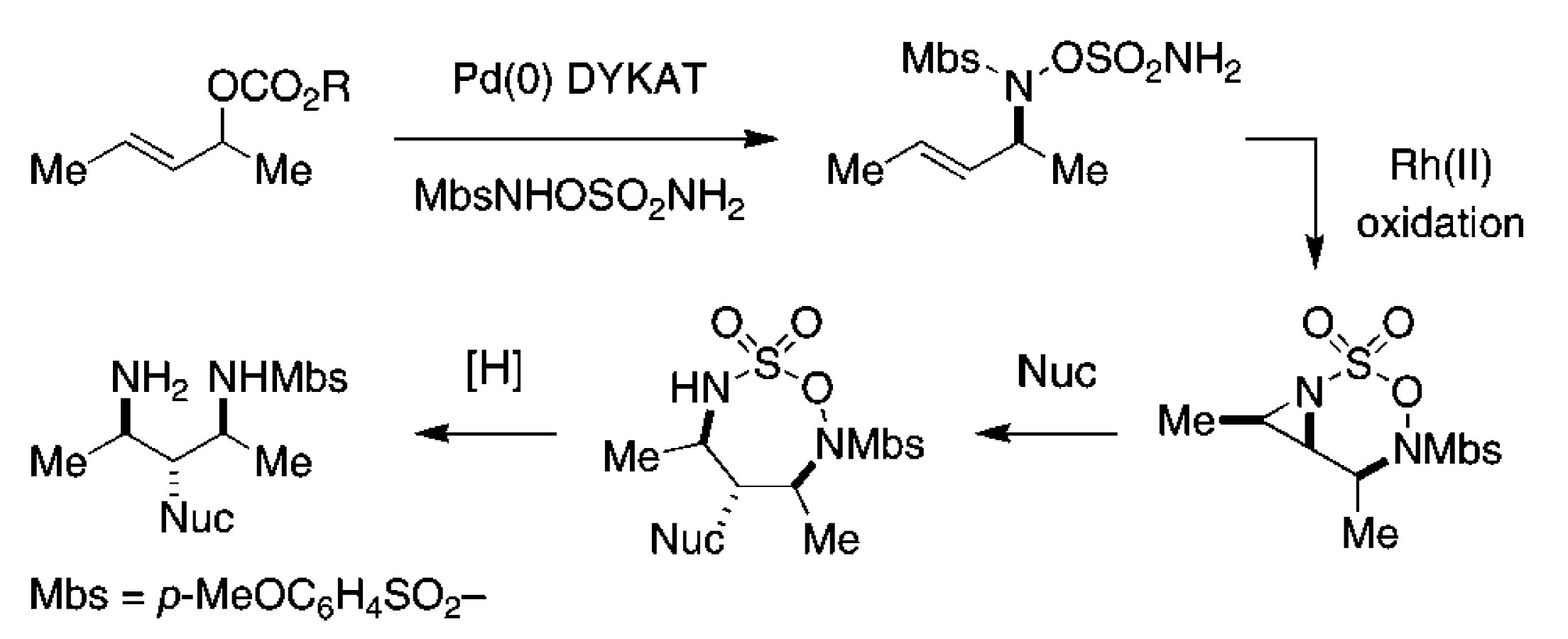
01/2009
Asymmetric Synthesis of Diamine Derivatives via Sequential Palladium and Rhodium Catalysis
RESEARCH